After all the heading east we did, the cruise headed north! It took us a whole day of sailing to get from the capital of England to the capital of Scotland, Edinburgh!
That gave me a nice day at sea to go to afternoon tea. I liked picking my treat from the tea cart and listening to the string quartet. My treat was yummy! When Grandma and Grandpa let me stay our cabin by myself, the cabin crew take very good care of me. Of course, I help out when they ask me to!



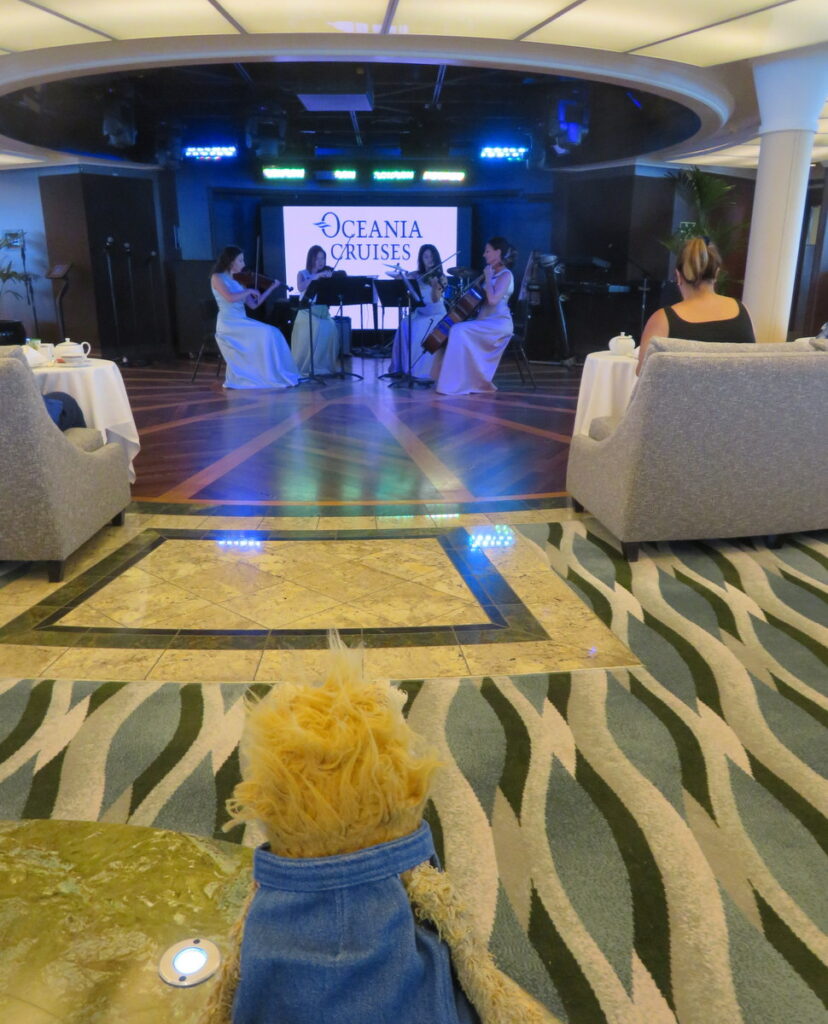
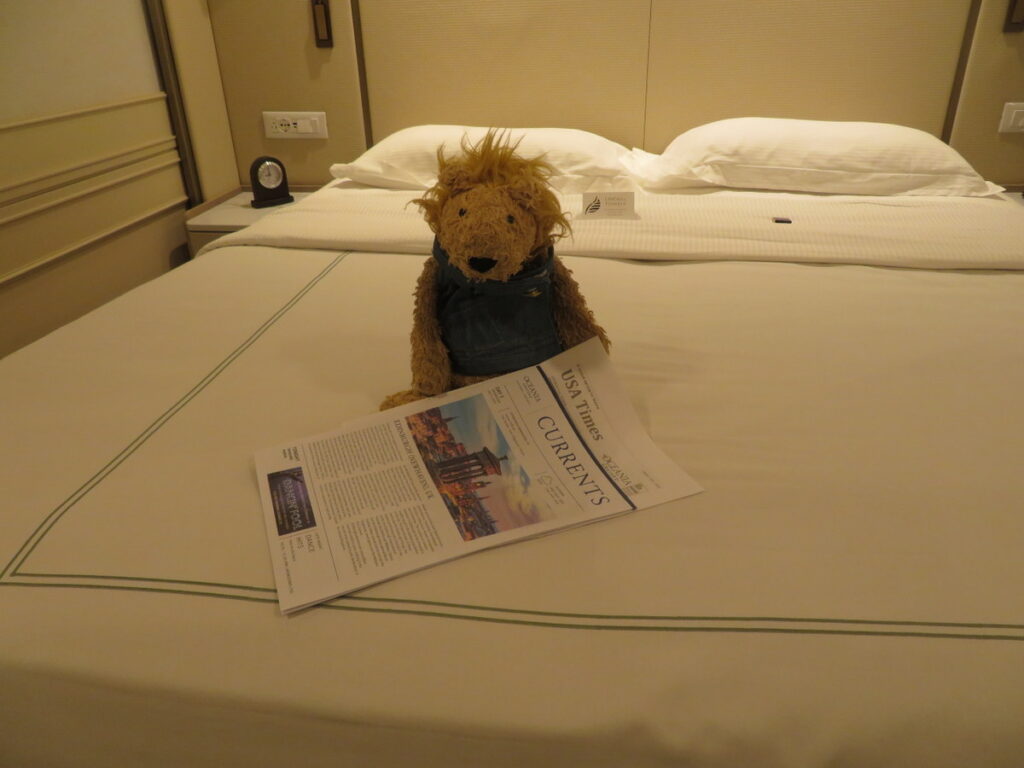
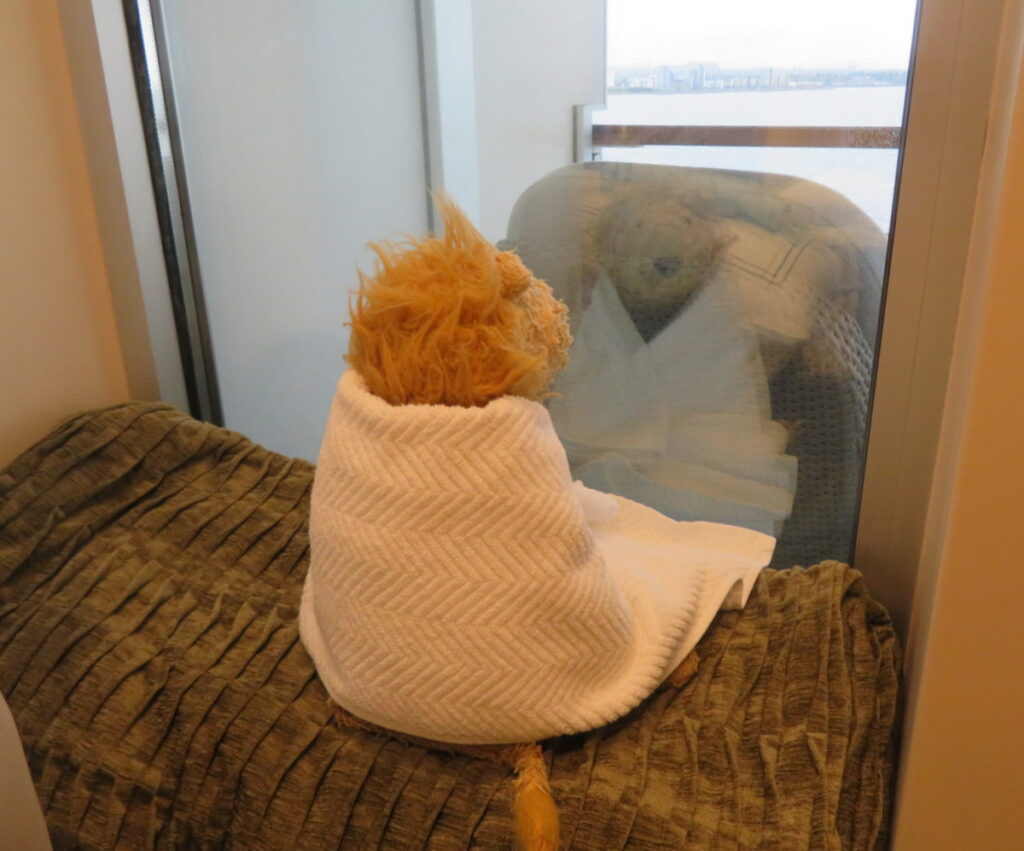
The day we were docked near Edinburgh, Grandma and I took a bus tour to Stirling. The history of Scotland includes many times when one group fought with another group over control of the land. Stirling was the site of an important battle between an English king’s forces and Scots who wanted to rule their own land. On the way to Stirling, we saw some giant horse statues beside the road! When we arrived in Stirling, we visited the castle first.
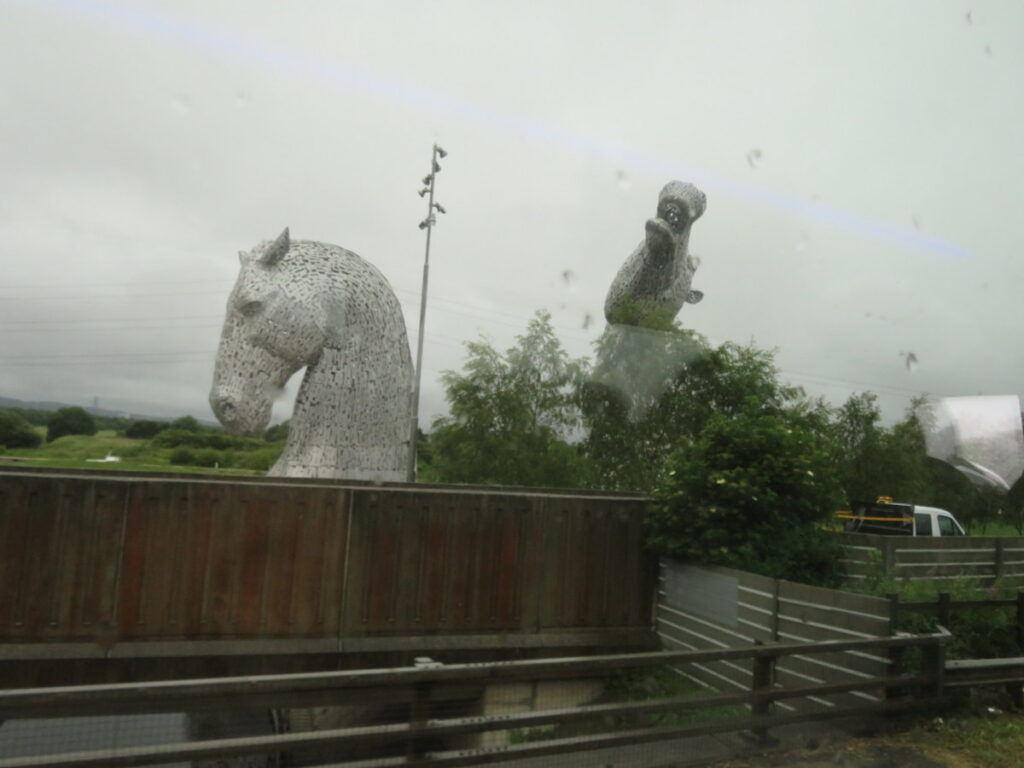
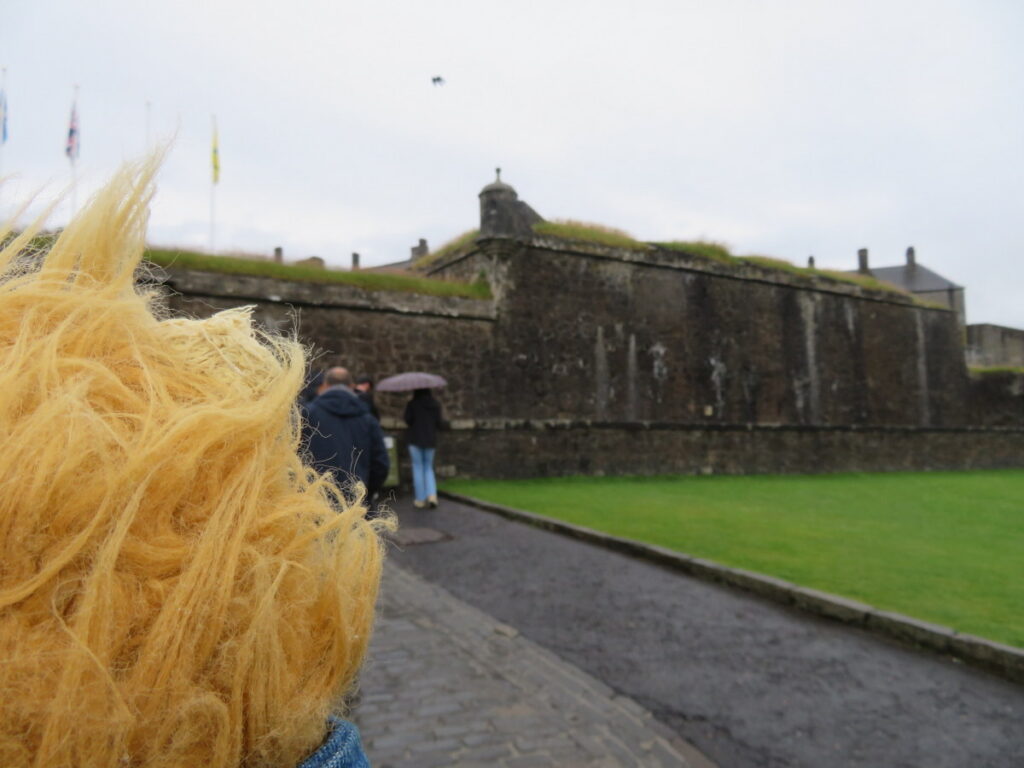
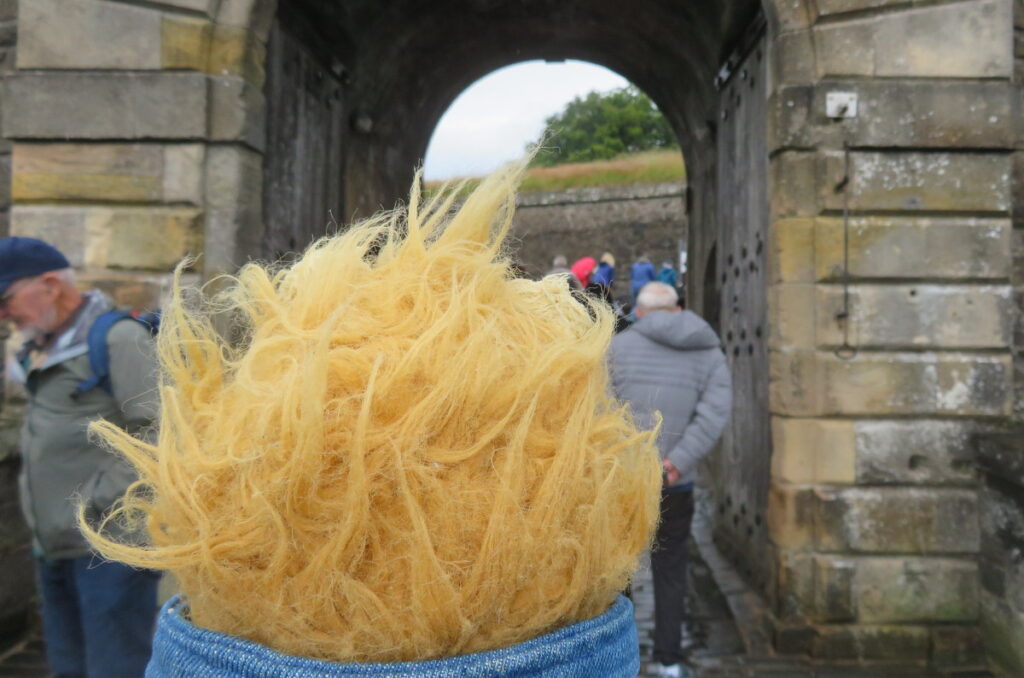
Parts of Stirling Castle date back to the 1300s. Nobody lives in it now, but parts of it have been restored to look like they did when Scotland had its own royal family. The Great Kitchen was built inside the inner castle walls. The cooks made very fancy food to amuse the king, like a pie crust shaped like a deer’s head. The Great Hall was the largest place to hold a banquet in all of Scotland when it was built. The Chapel Royal was built especially for the baptism of a future king.
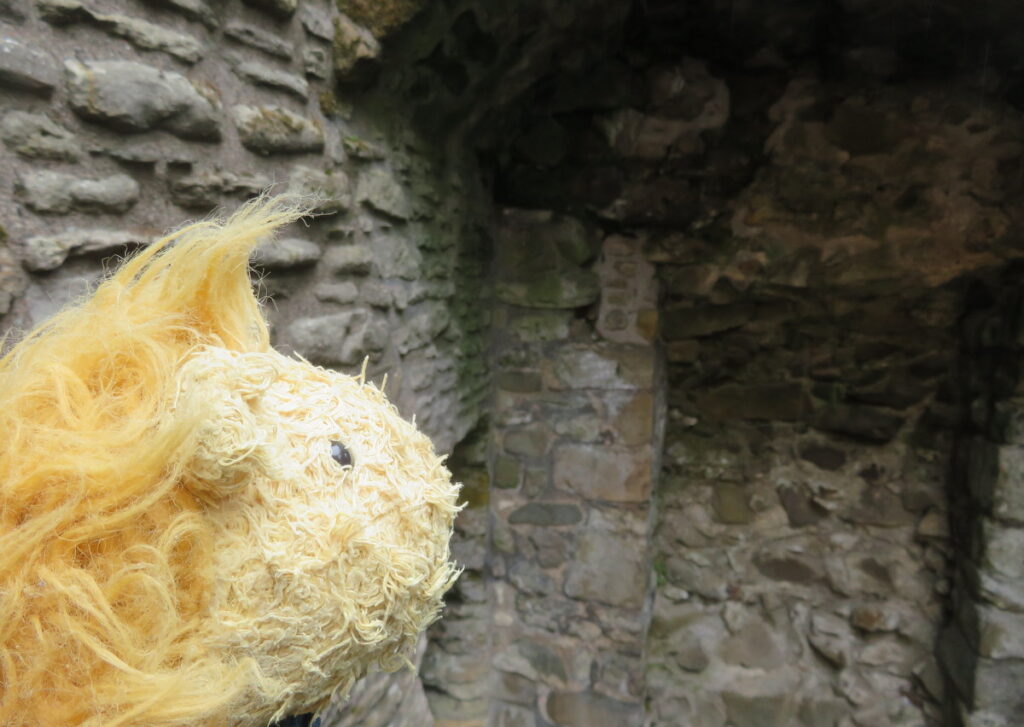

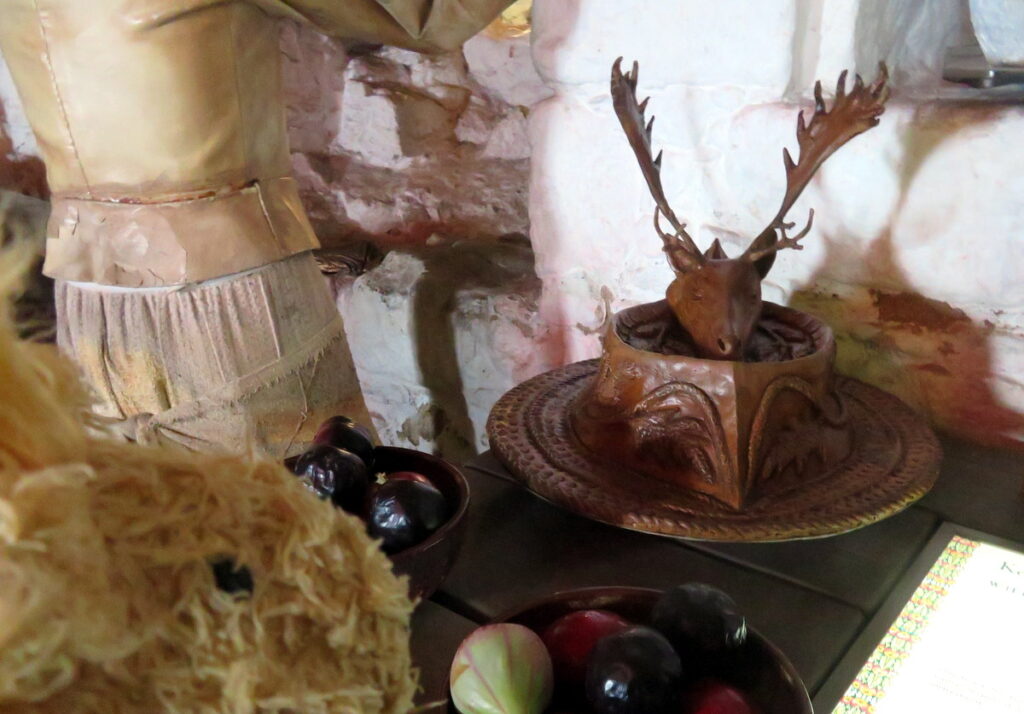
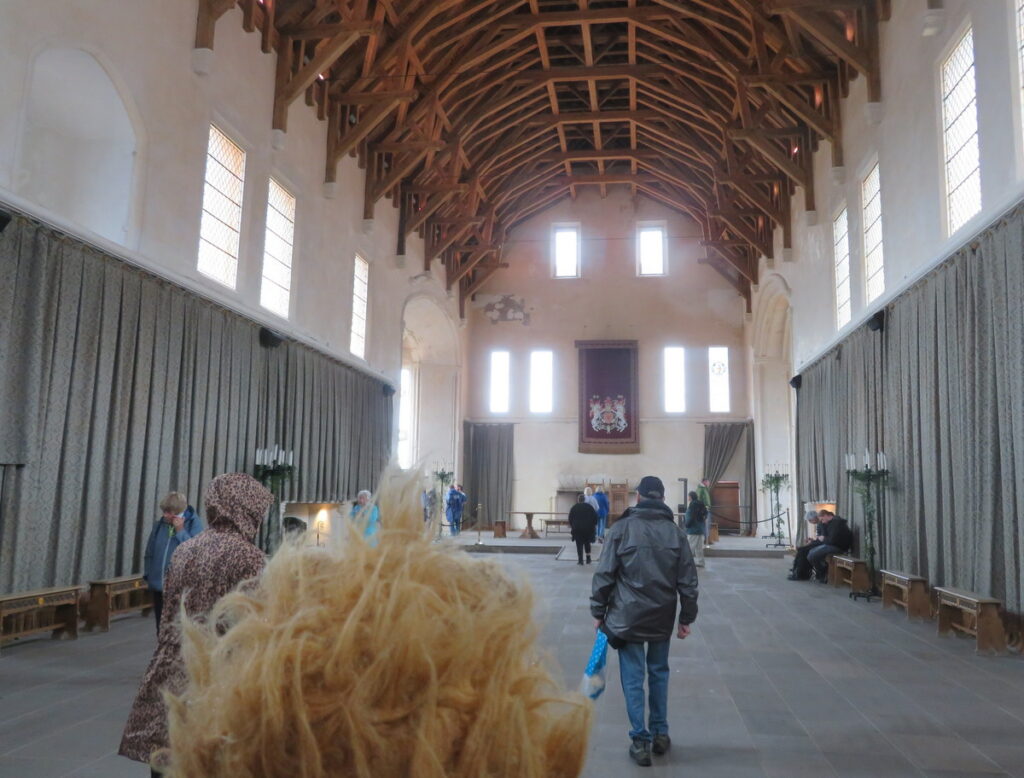
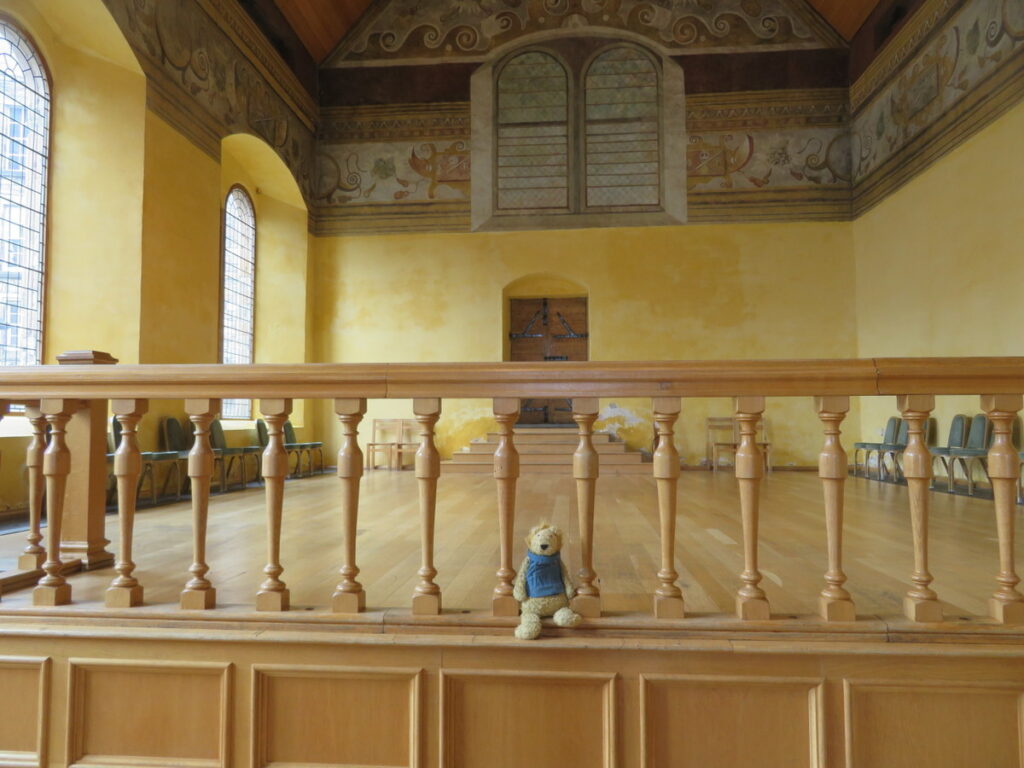
The palace was the building where the king and queen lived and received visitors. Many of the walls were decorated with tapestries. The fabric helped keep the rooms warm. A lot of those tapestries included pictures of unicorns. In the king’s rooms, the ceiling was decorated, too! One ceiling had wooden carvings, mostly of the heads of famous people. The original carvings are preserved in the Stirling Heads room. I saw three of my cousins wrestling Hercules!
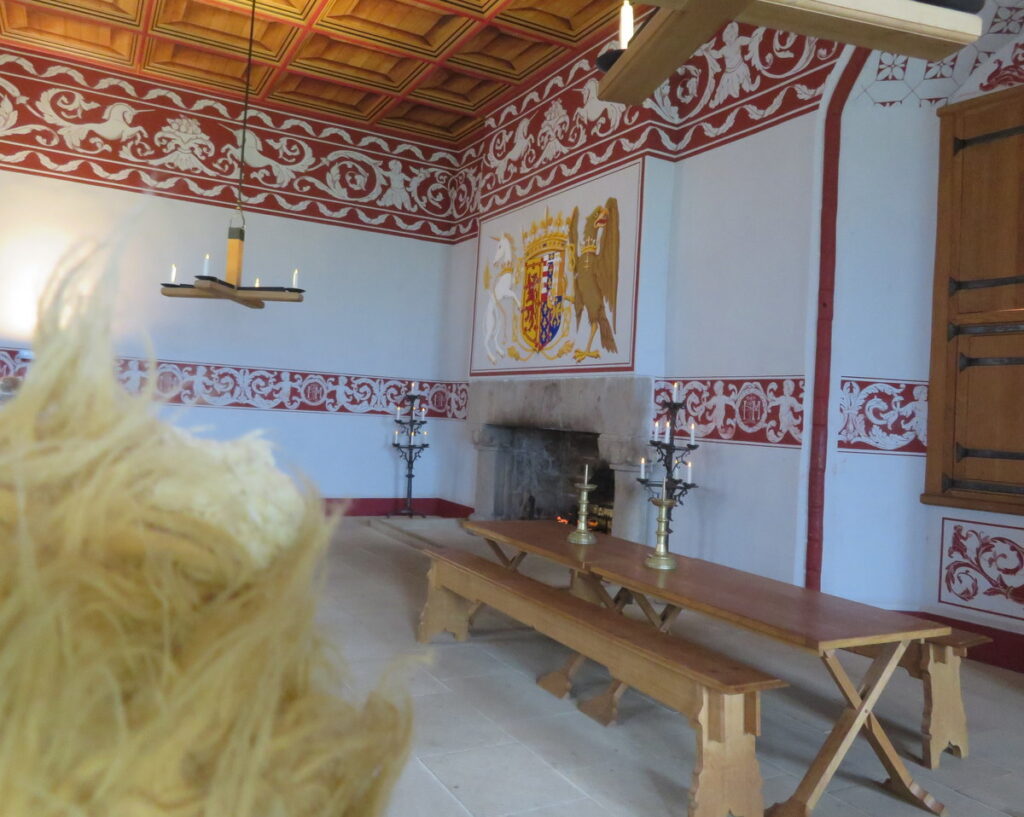
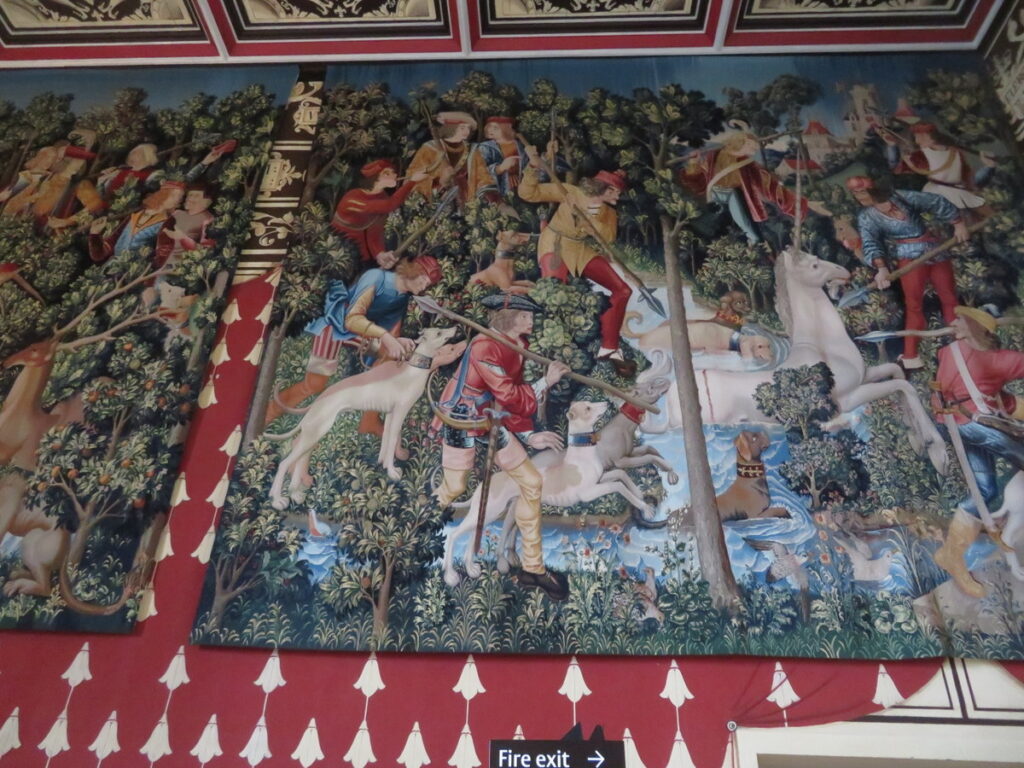
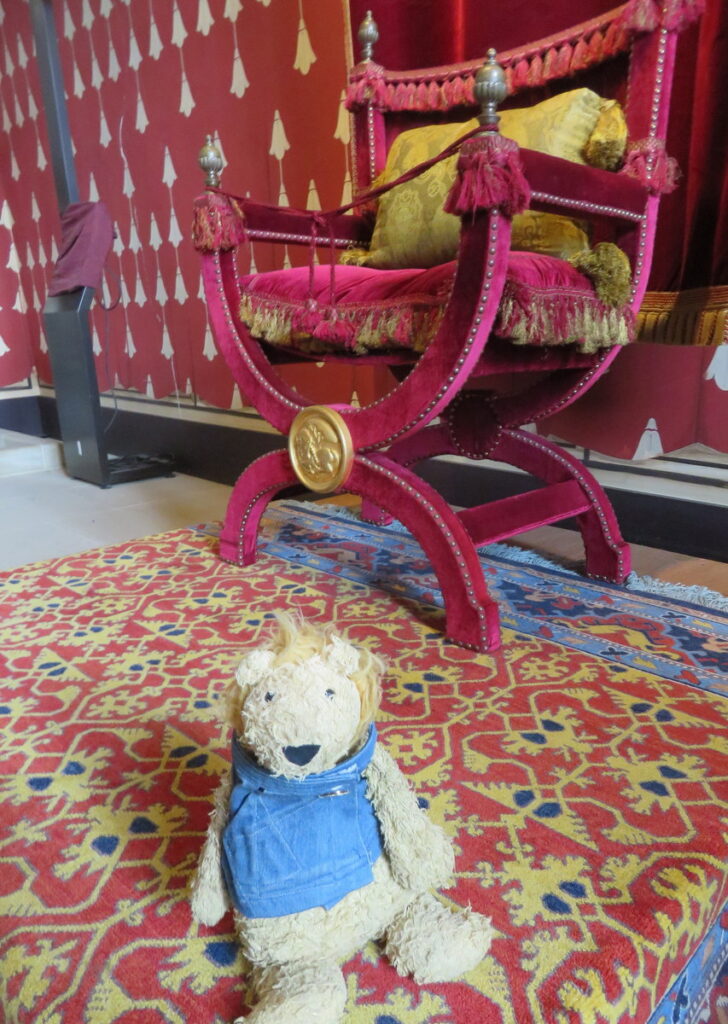
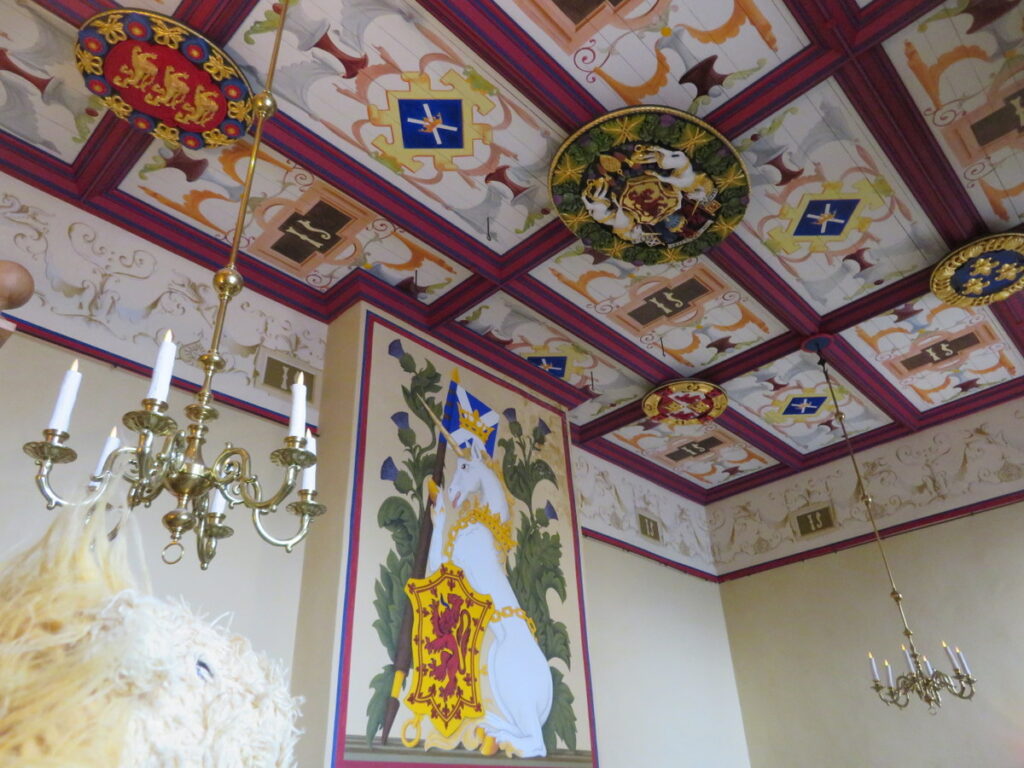
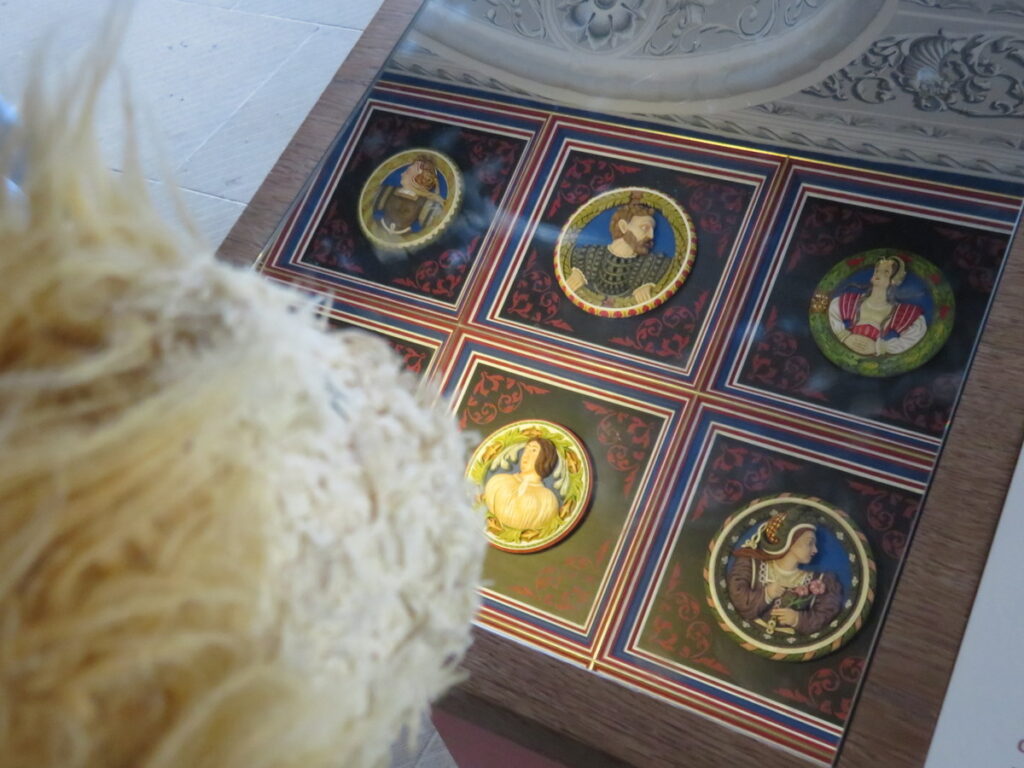
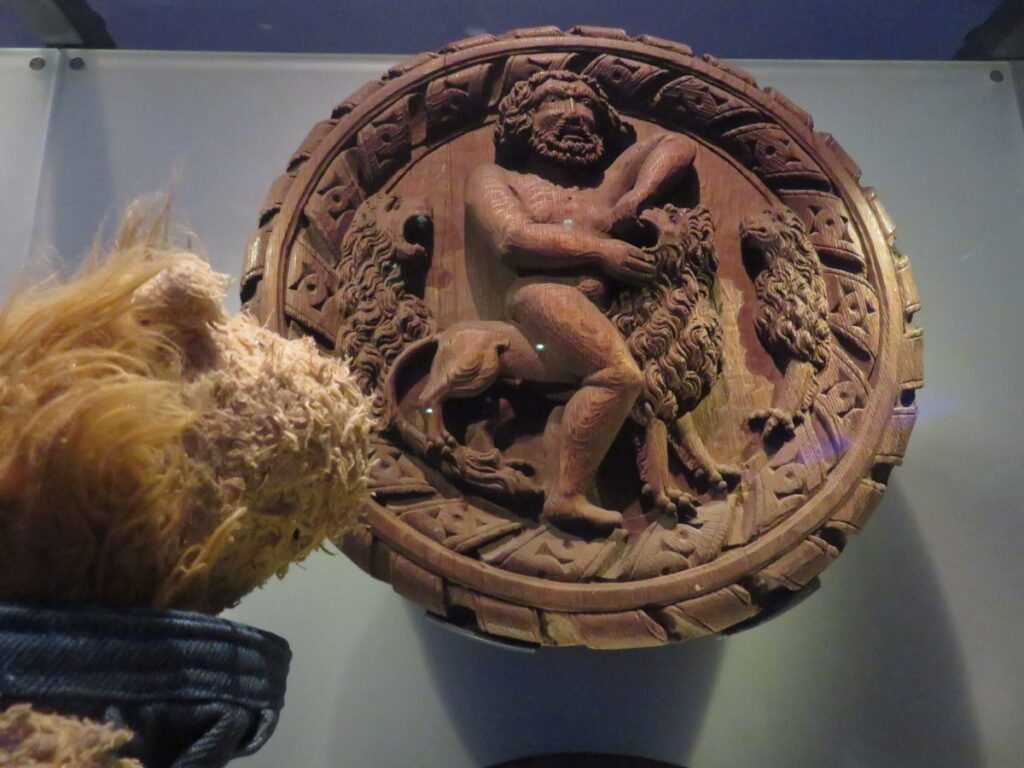
When I climbed up to the Prince’s Tower, I could see how the castle was defended from attacks. I could also see down into Queen Anne’s garden. Before we left, I made some flower friends there.
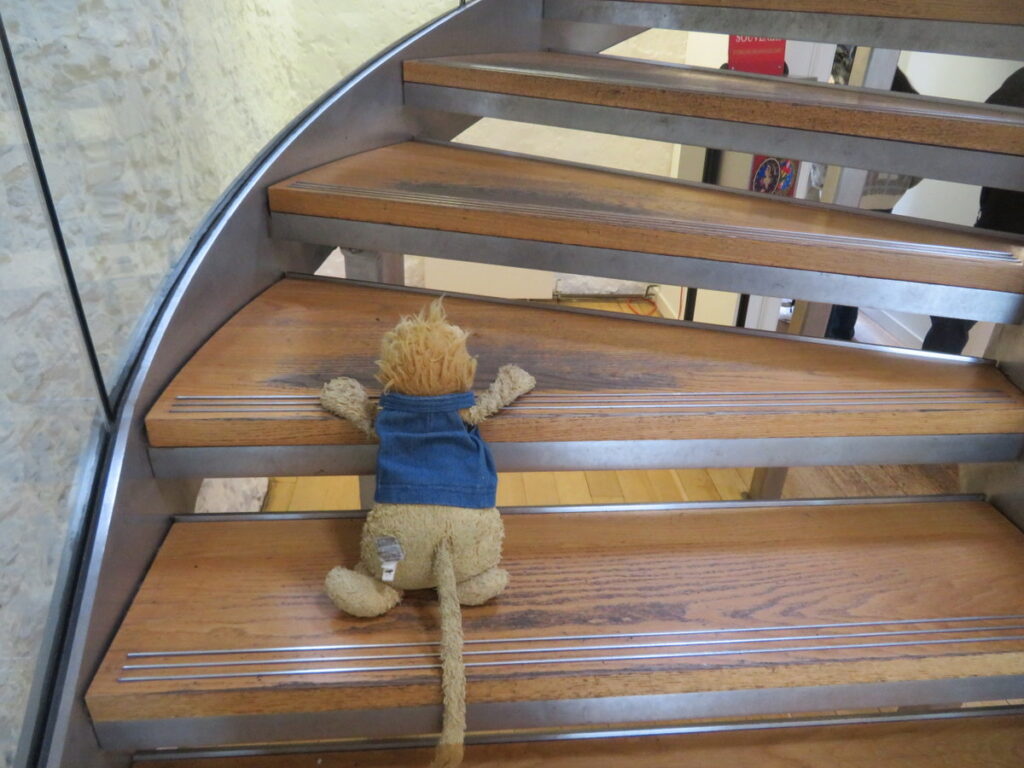
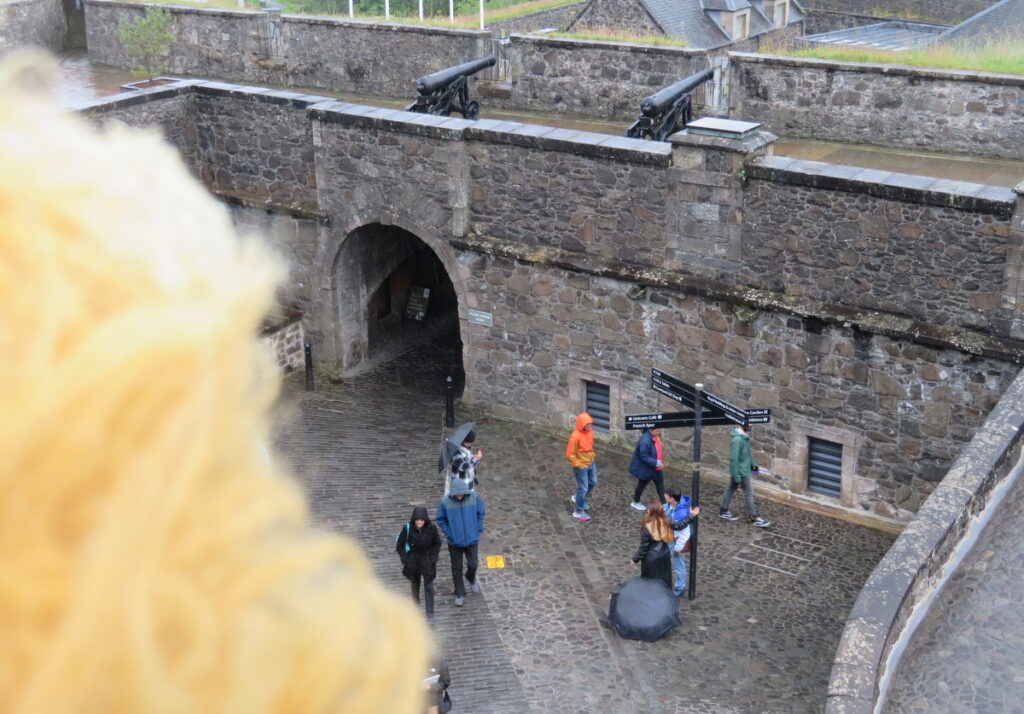
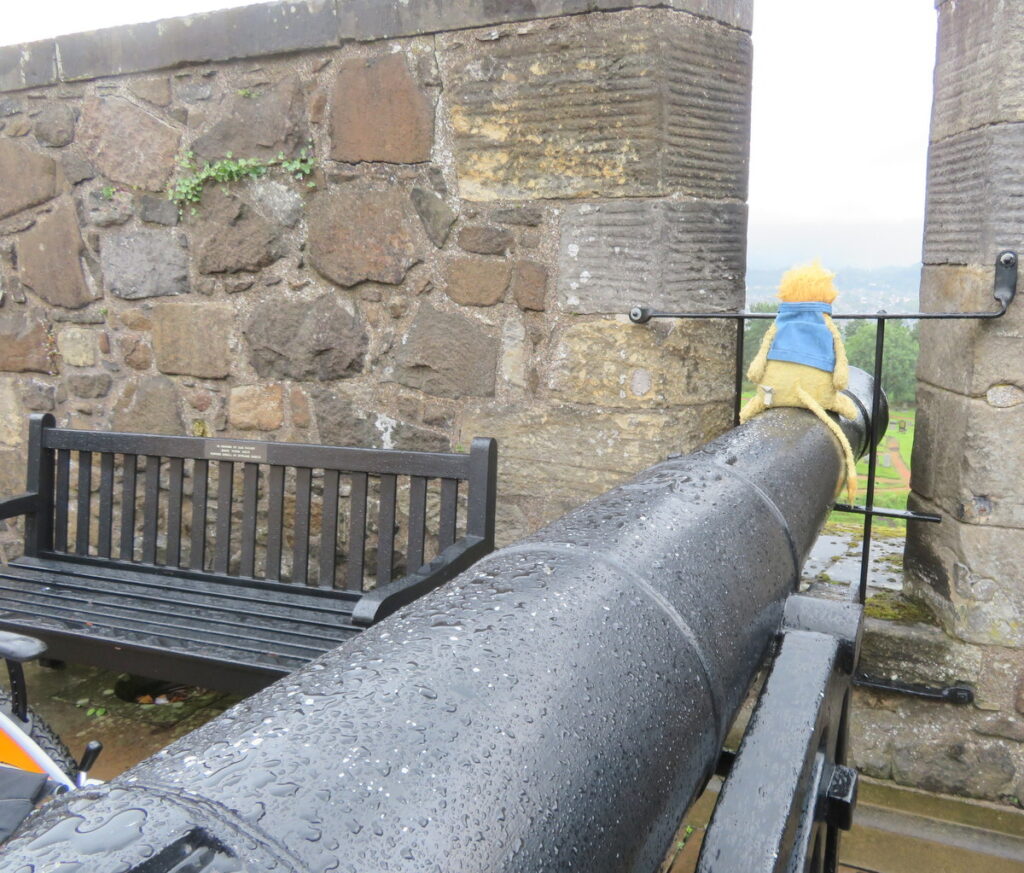
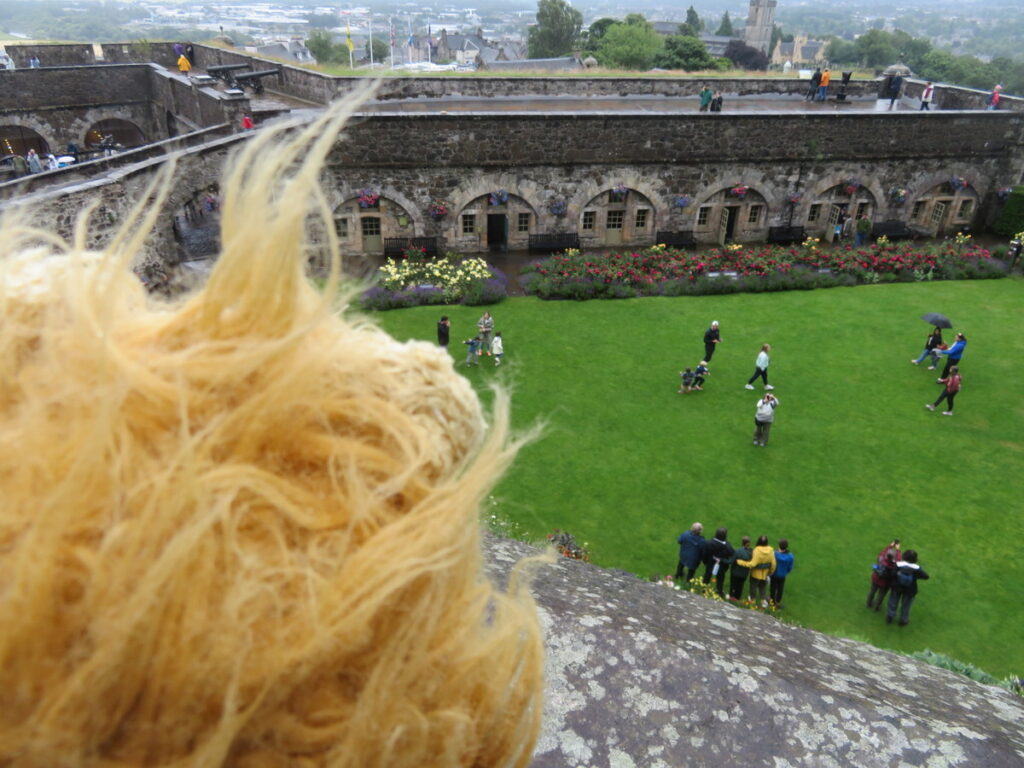
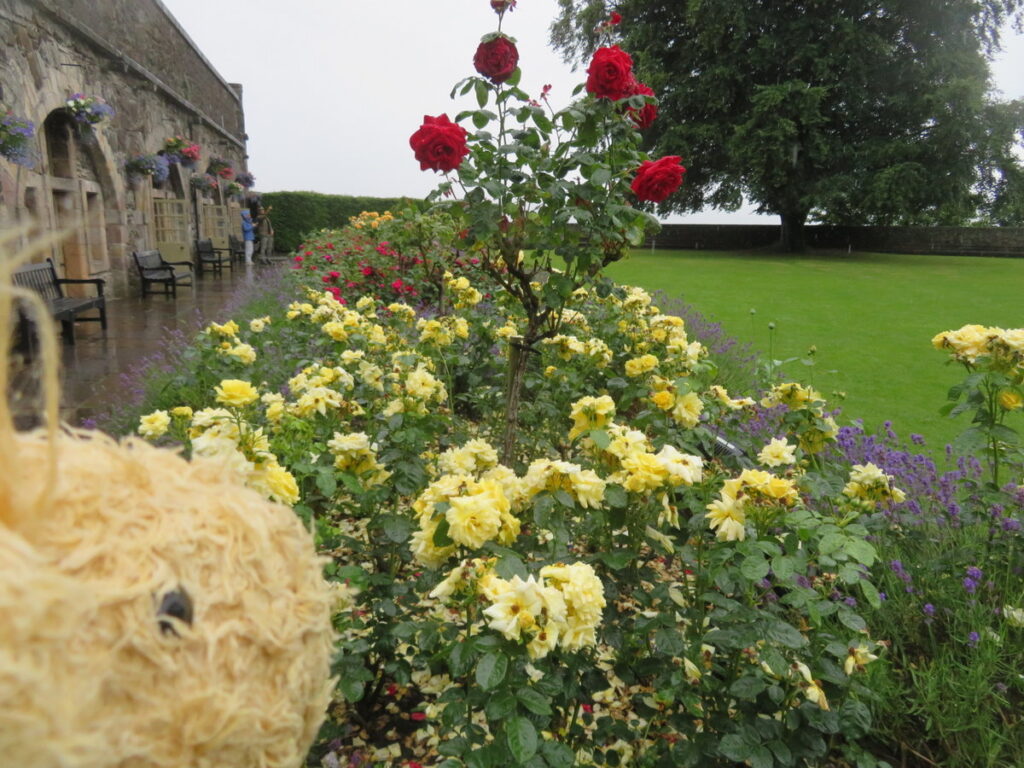
In 1313, Stirling Castle was in the hands of the English King Edward II, but was threatened by Scottish forces under their king, Robert the Bruce. The keeper of the castle agreed that if English reinforcement troops didn’t arrive by Midsummers Night in 1314 (June 24), he would surrender the castle to the Scots. Edward II was fighting other wars at the time, but he was now forced to raise an army and march to Stirling. Robert the Bruce raised a much smaller army, but blocked Edward II’s progress just short of the castle near Bannockburn river. At the Battle of Bannockburn visitors center, we learned how Robert the Bruce’s strategies and the boggy ground allowed his smaller army to defeat his English foes. He massed his spearmen into clusters of long sharp spears pointed forward — sort of like a big combat hedgehog. English cavalry horses were smarter than their armed knight riders. The horses refused to charge into a thicket of spears pointed at them and heading their way. Then the heavy horses and riders got stuck in the mud.
Outside the visitors center, there’s a monument to Robert the Bruce. I could see Stirling Castle in the distance!
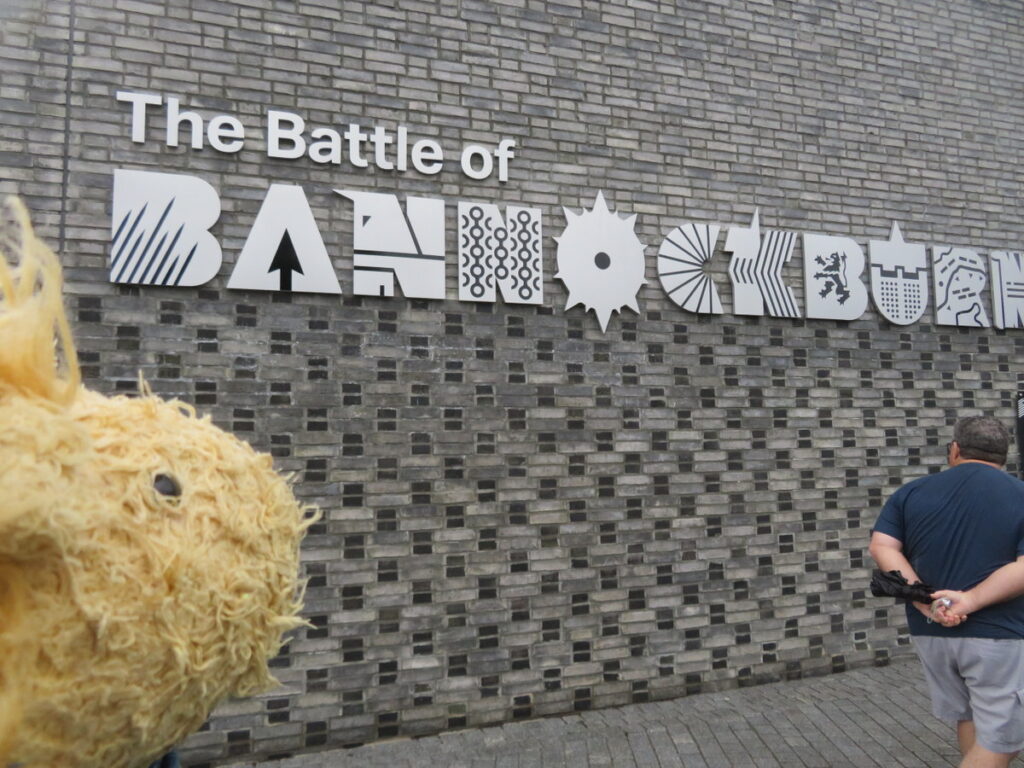
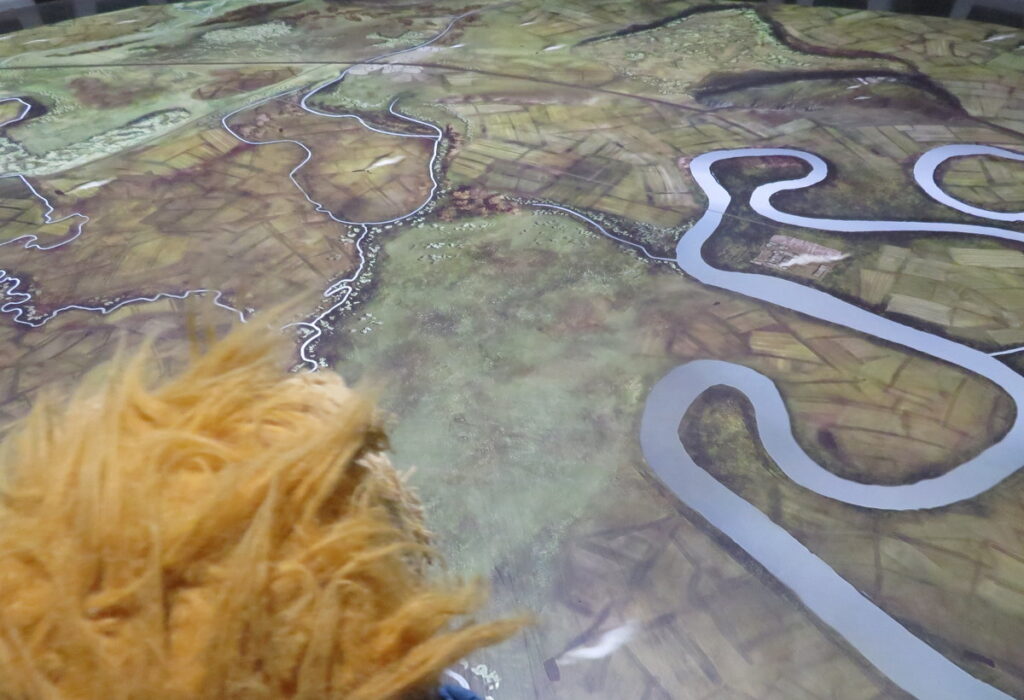
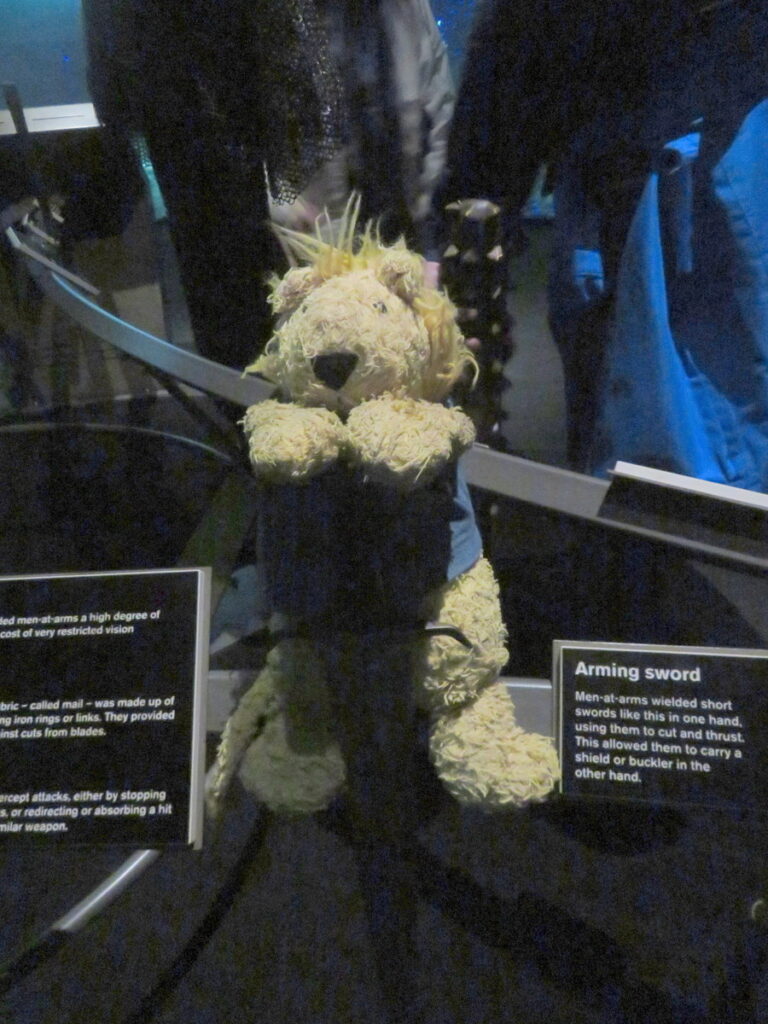
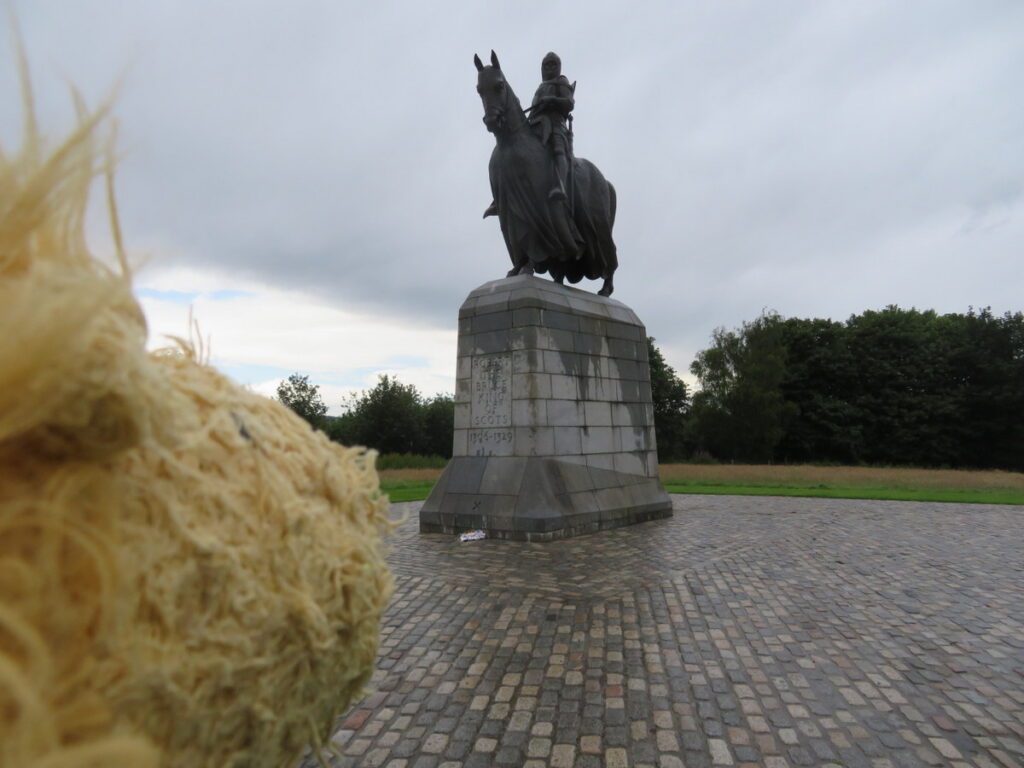
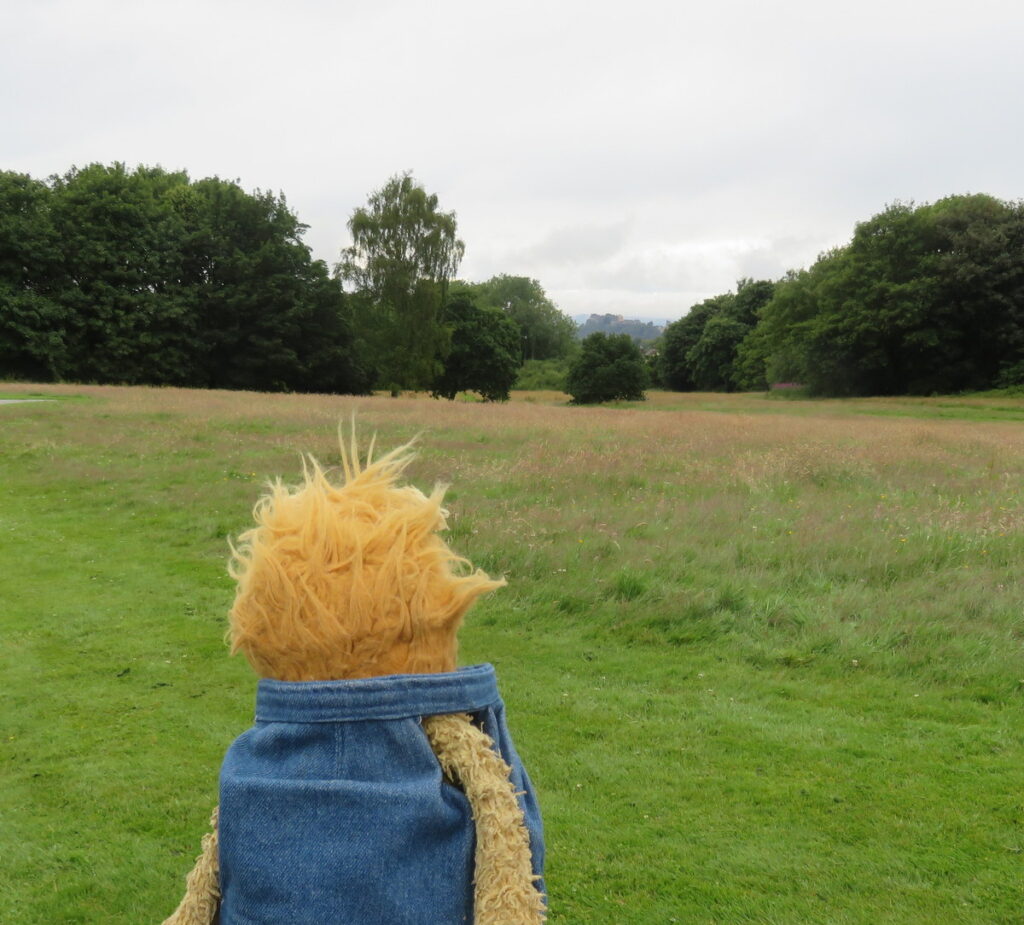
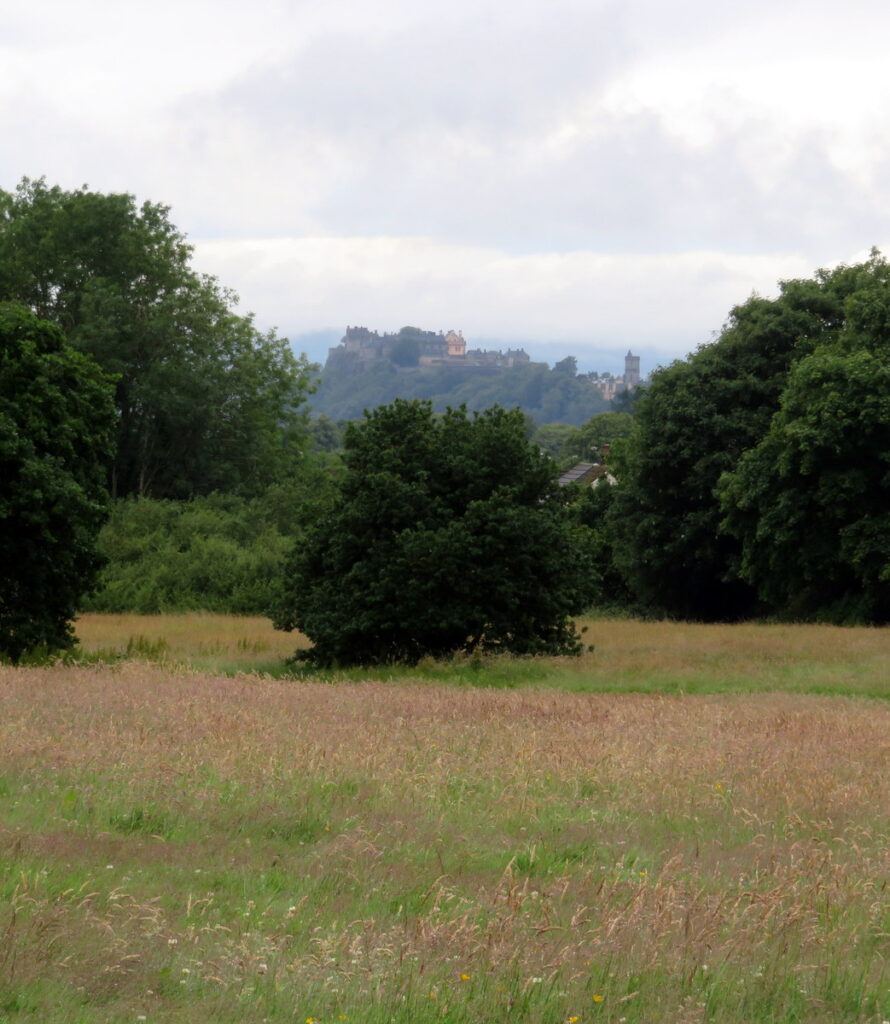
We got back from Stirling in time for tea, and I had my first scone! Since we’re heading north, sunset is getting later every day.
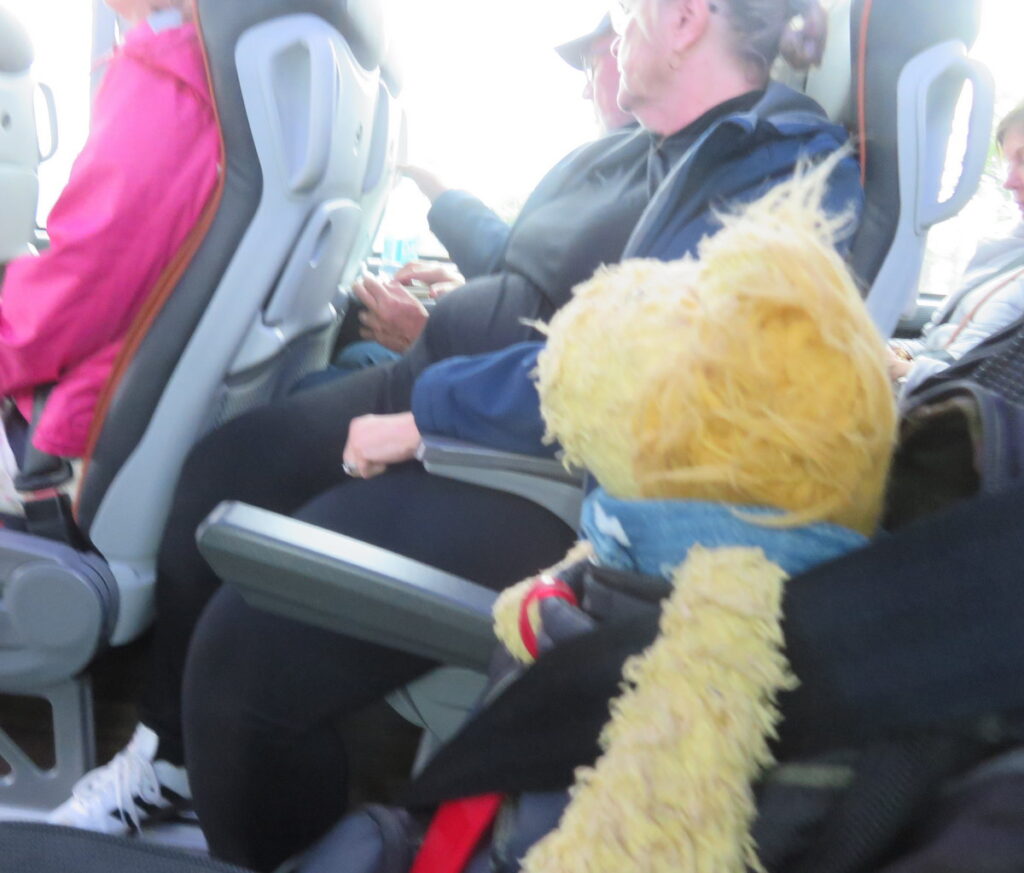
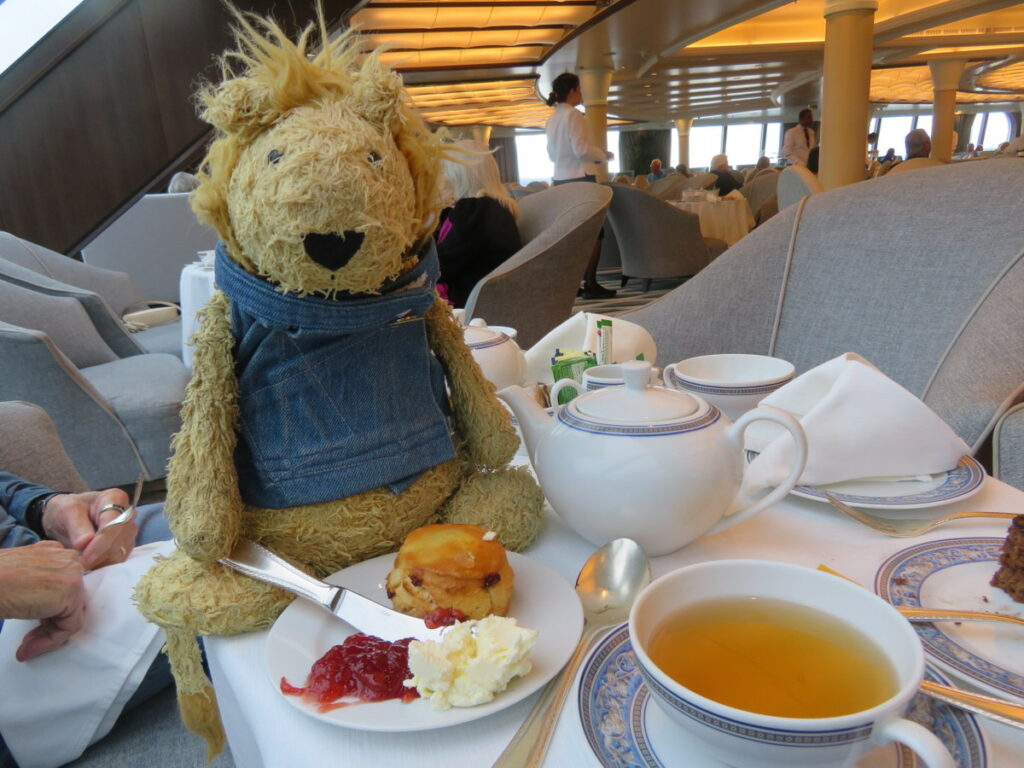
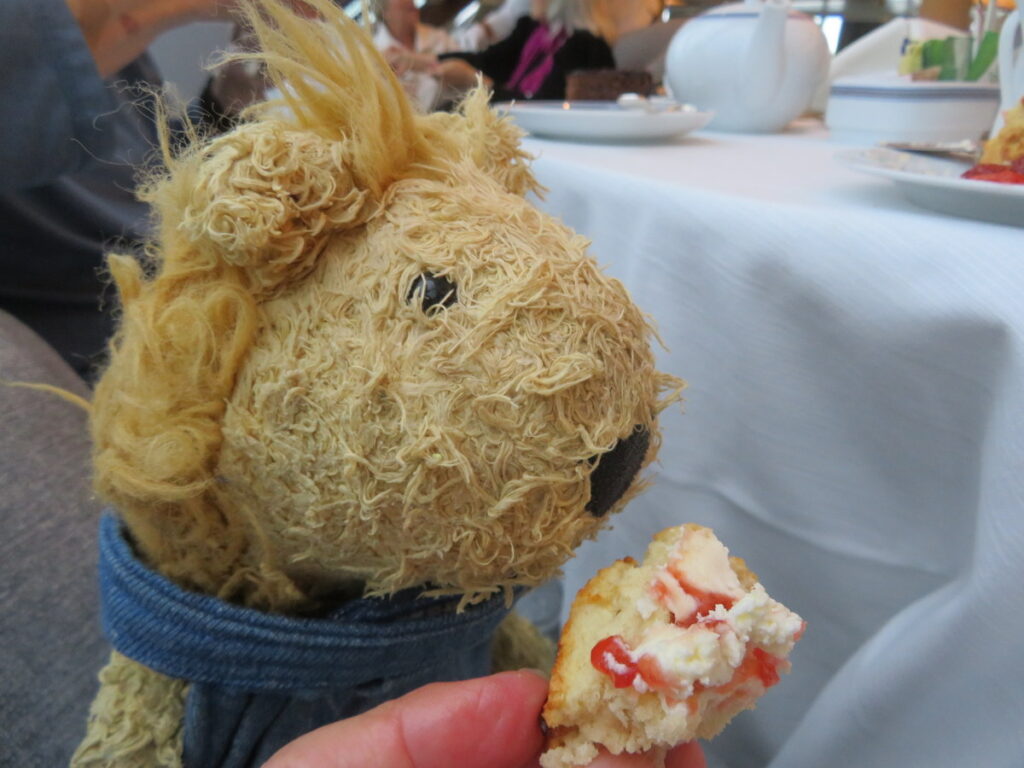
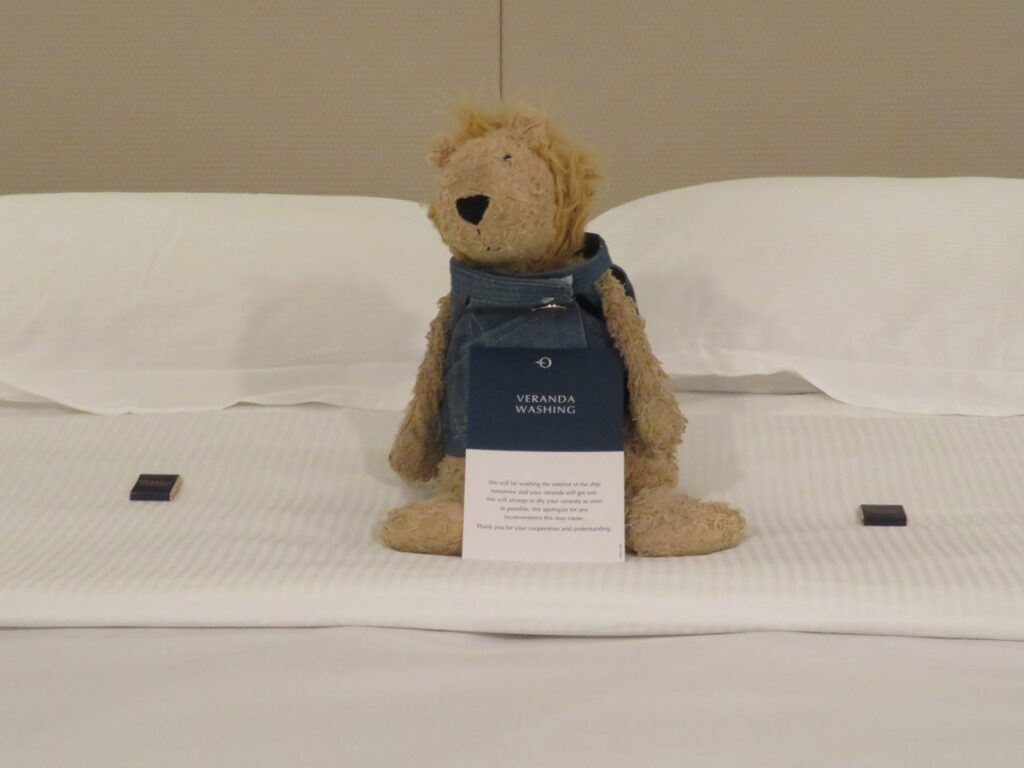
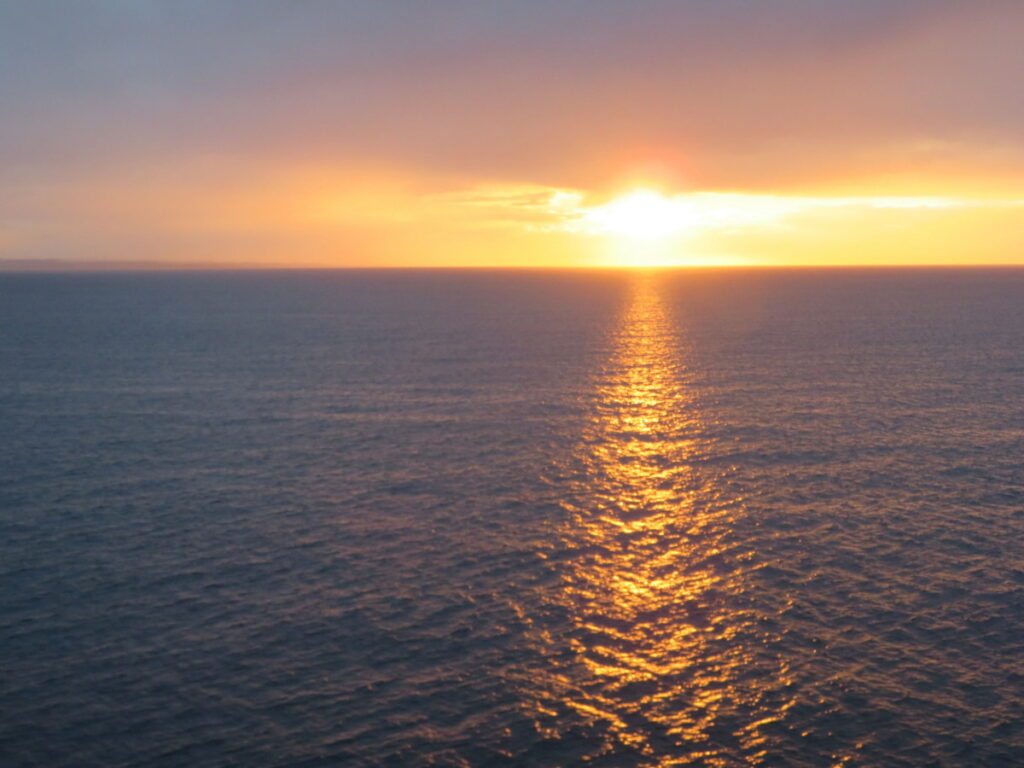
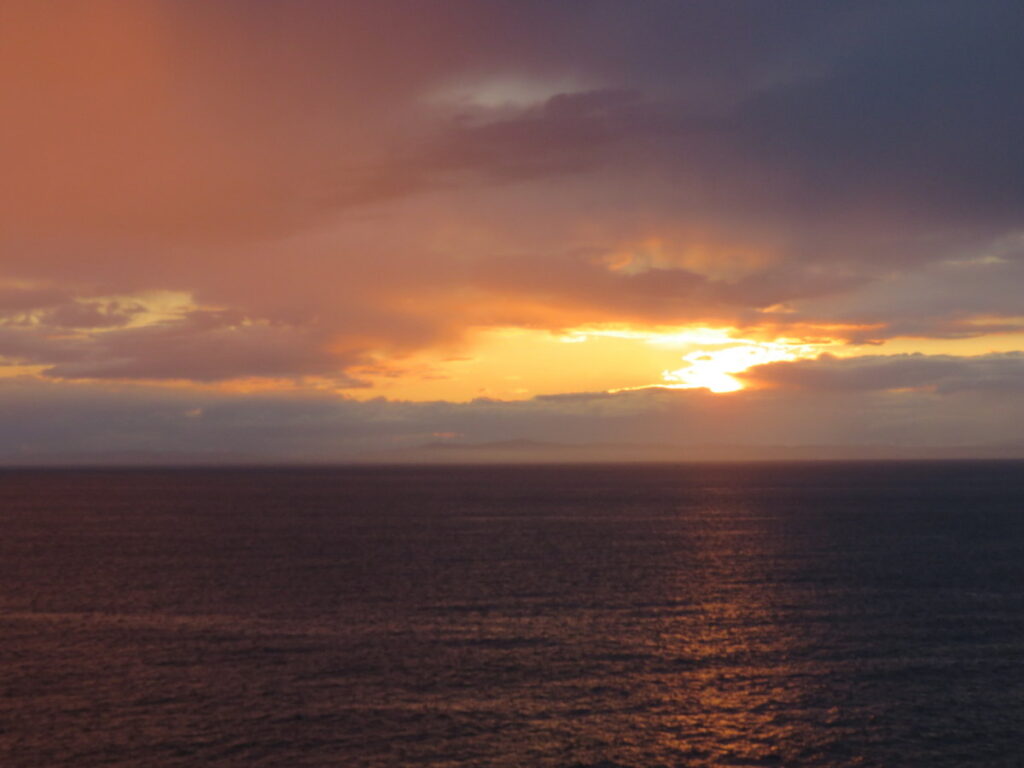
On July 3, we were docked in Invergordon in the Scottish Highlands when I woke up. We visited two more castles on our tour that day! Urquhart Castle is situated on Loch Ness in the Great Glen and controlled travel through the Highlands for hundreds of years. Urquhart Castle is about as old as Stirling Castle and was involved in the same wars between English and Scottish kings. After that, it was attacked and held by different Scottish clans. Finally it was involved in the Jacobite rebellion, an attempt to restore the descendants of James II to the British throne. The last defenders of the castle blew up the gate house when they left in 1692, to keep the Jacobites from occupying the space. We watched a movie about the history before we walked around the ruins.
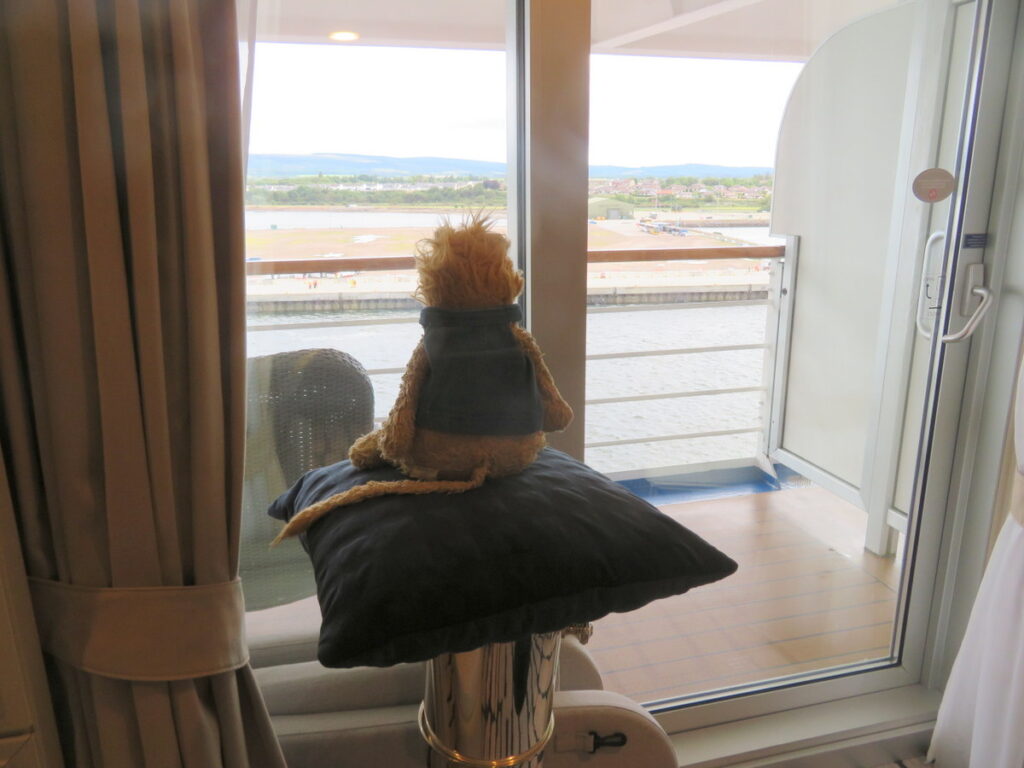
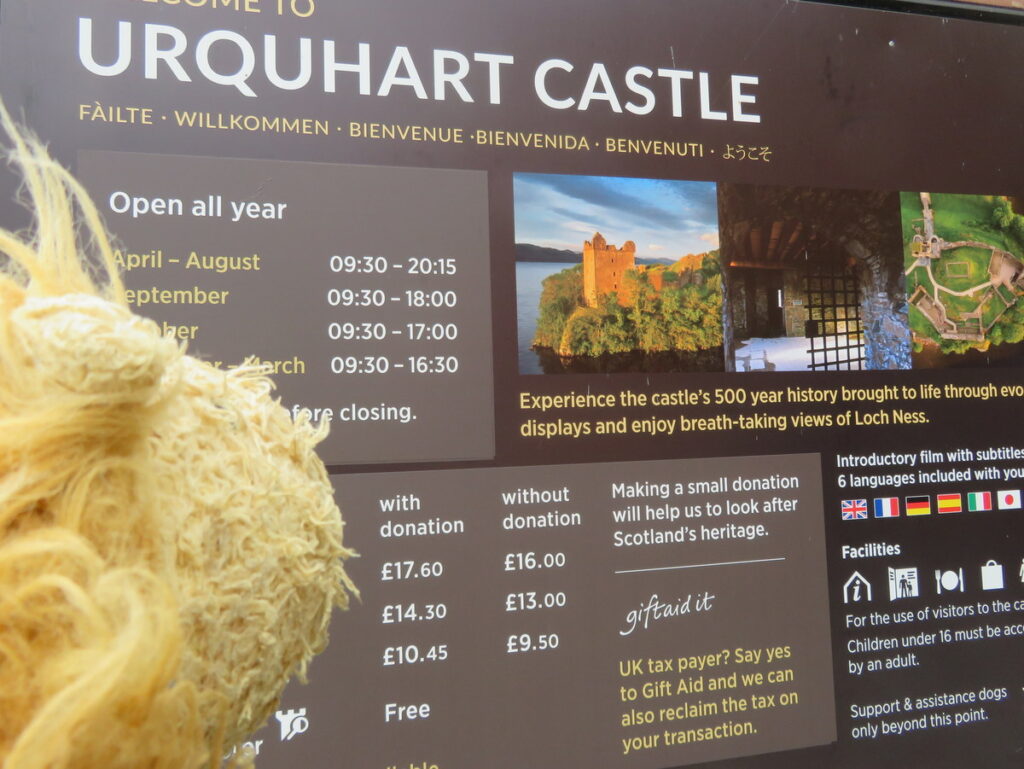
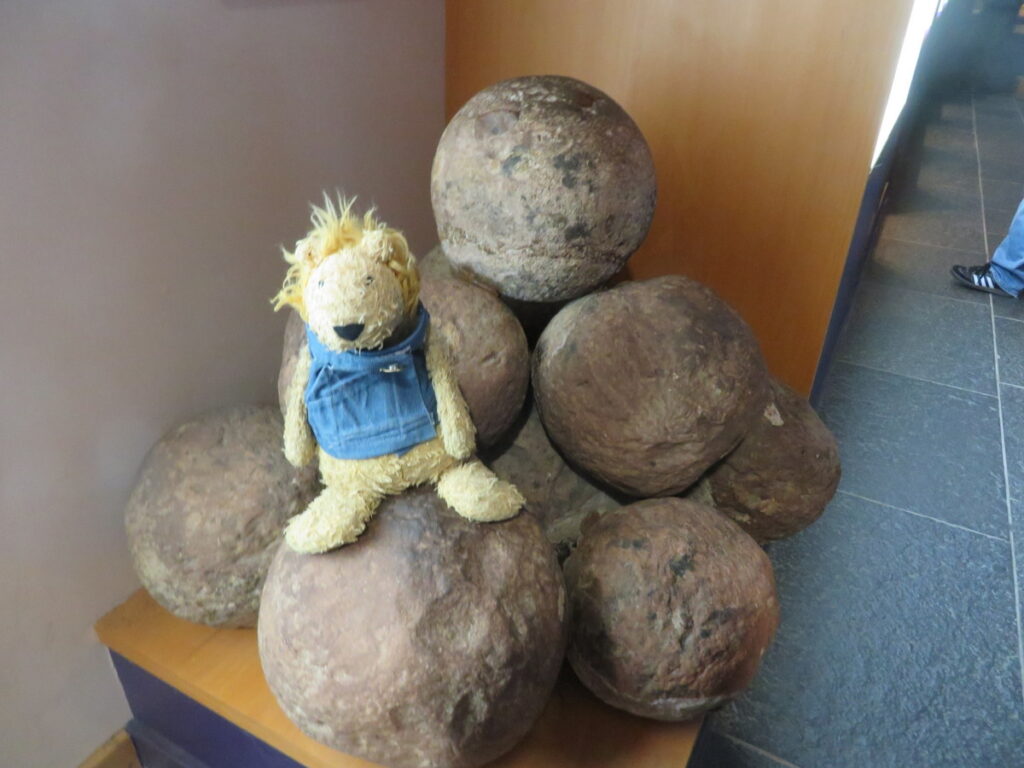
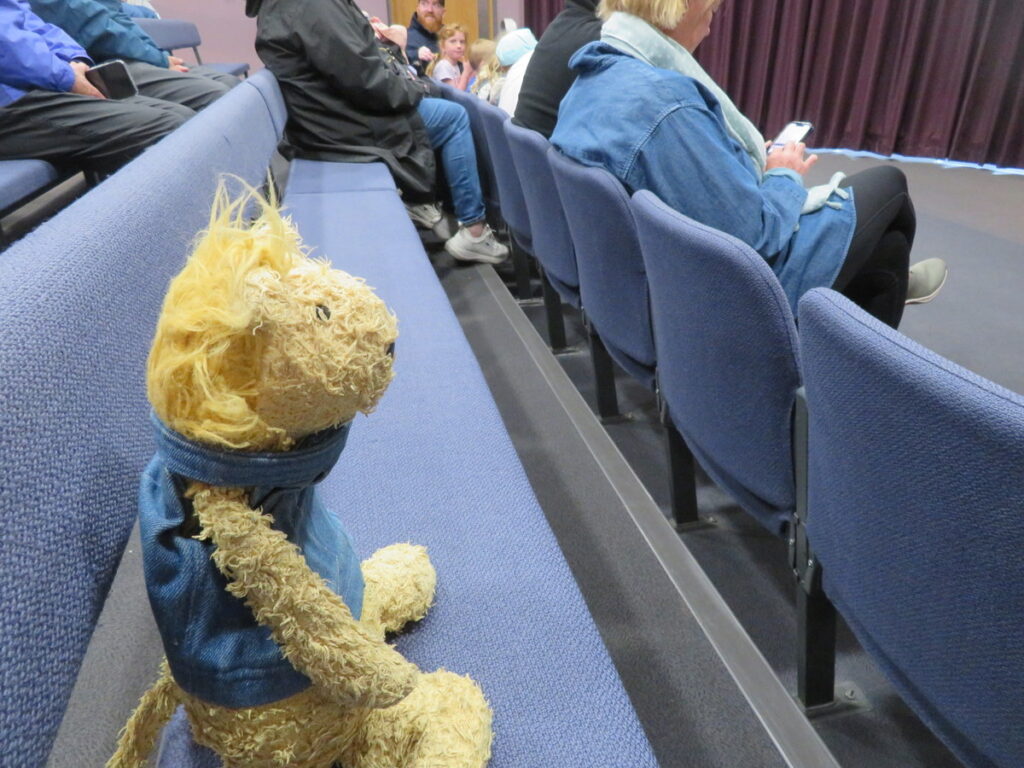
Grandma and I walked down to the water gate. Loch Ness is a very long (24 miles) and deep (800 feet) lake. People have seen something that resembles a sleek, swimming dinosaur. The tales of the Loch Ness monster have made the lake famous. I looked for Nessie, but I didn’t see anything.
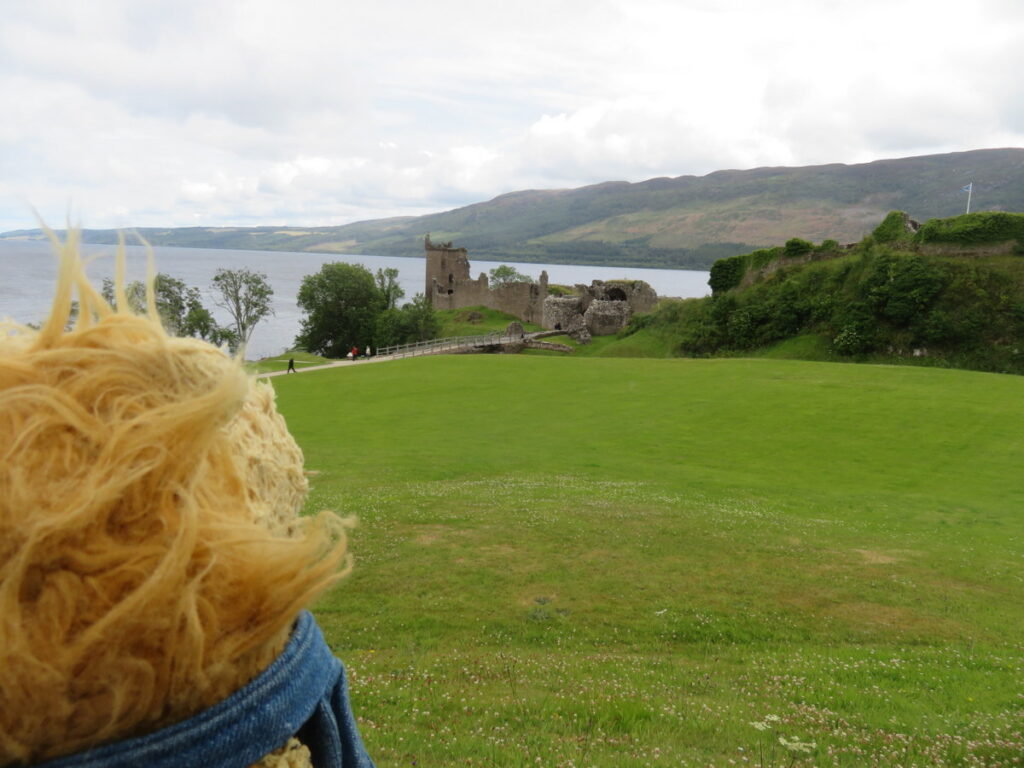
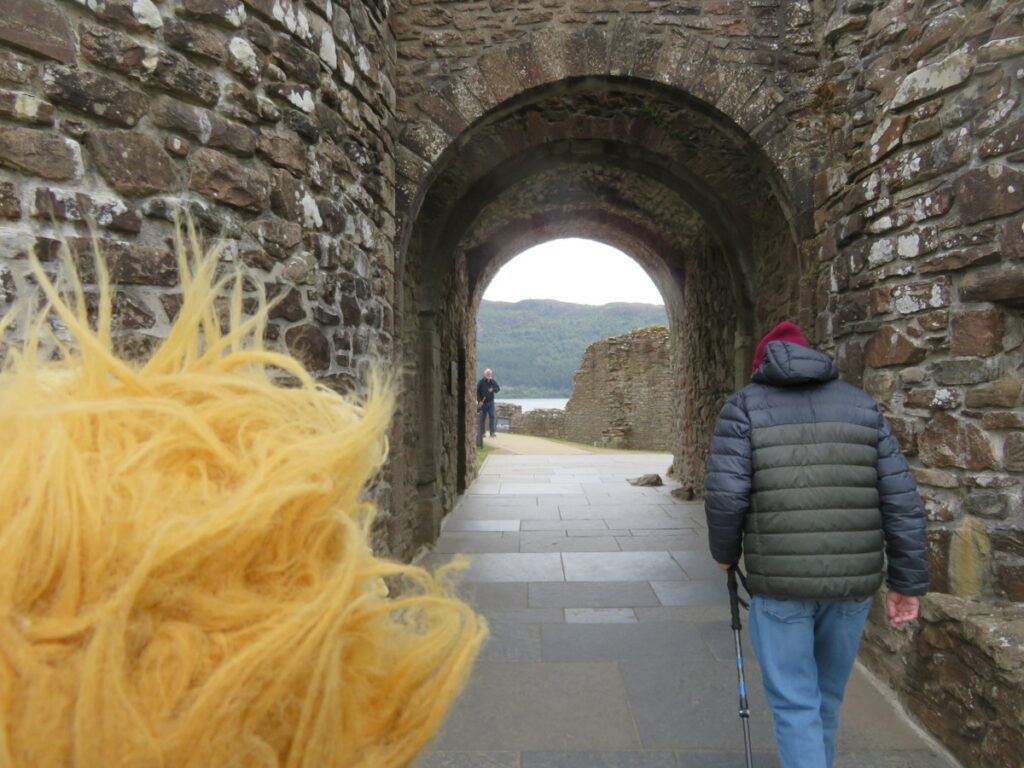
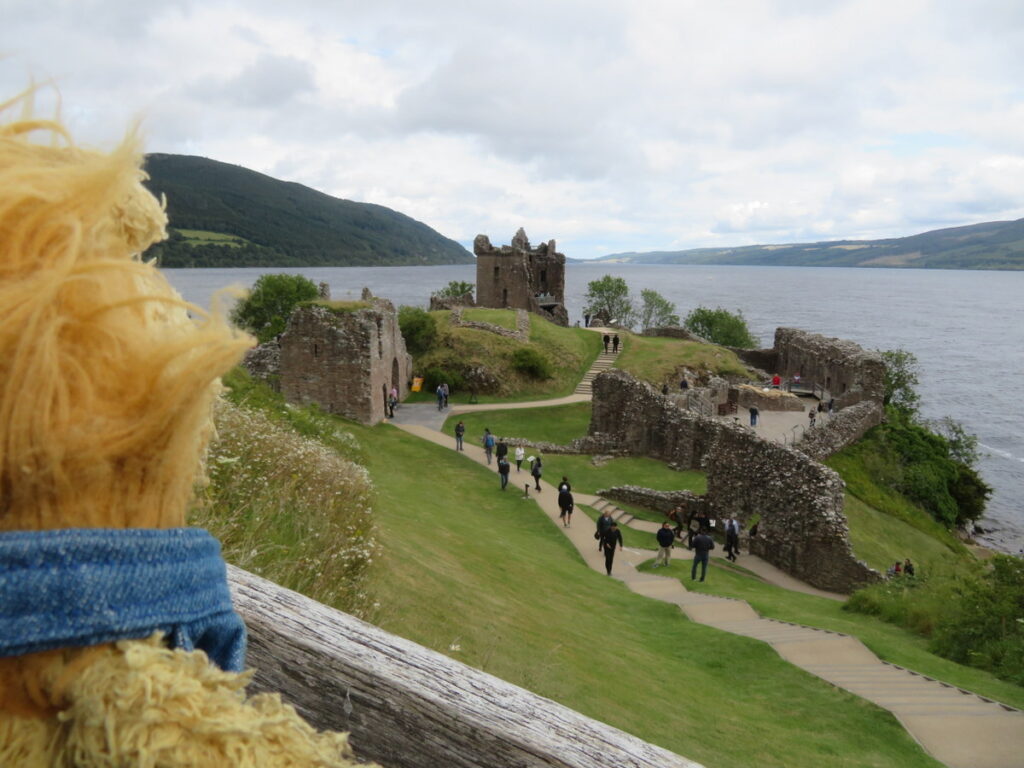
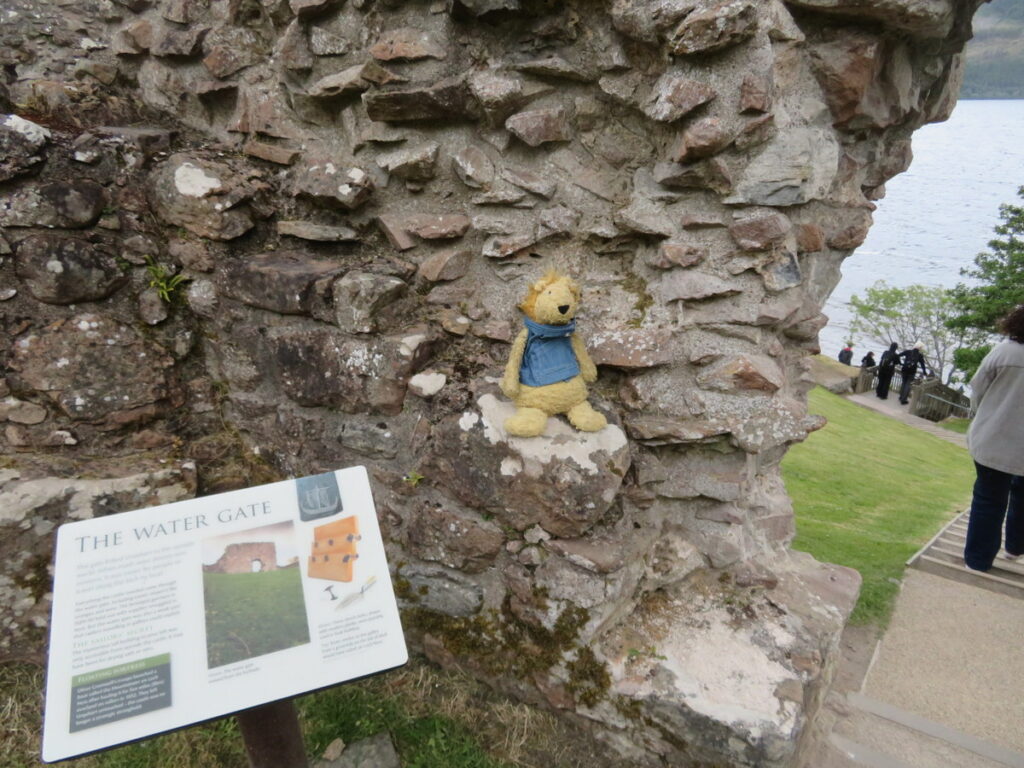
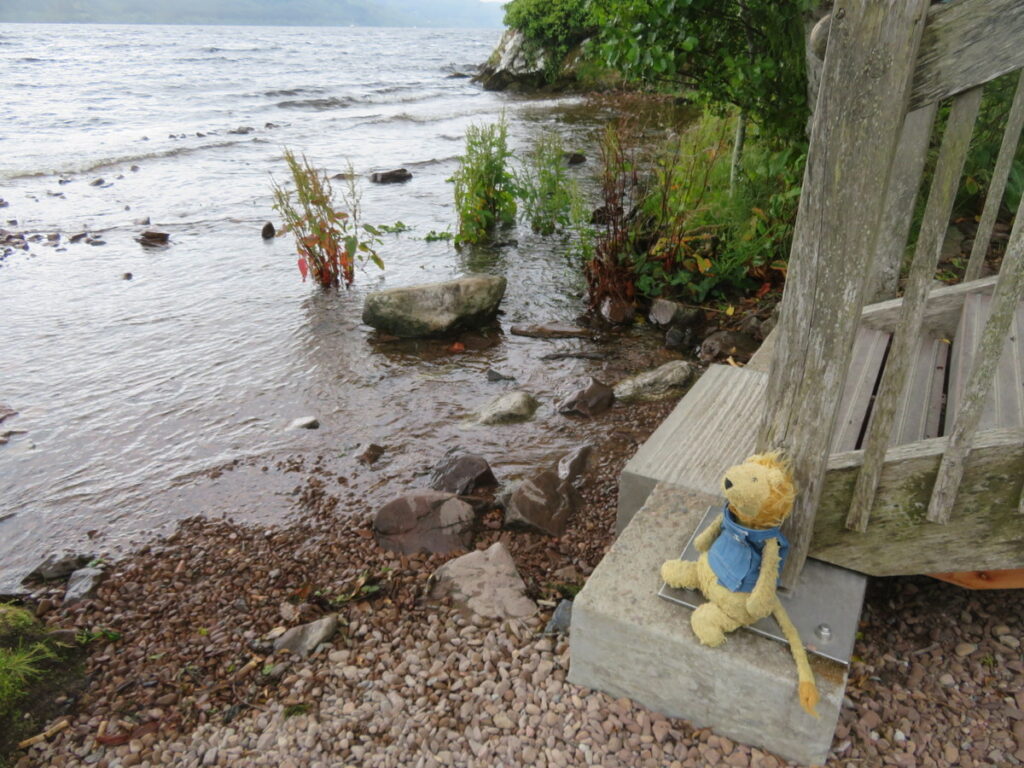
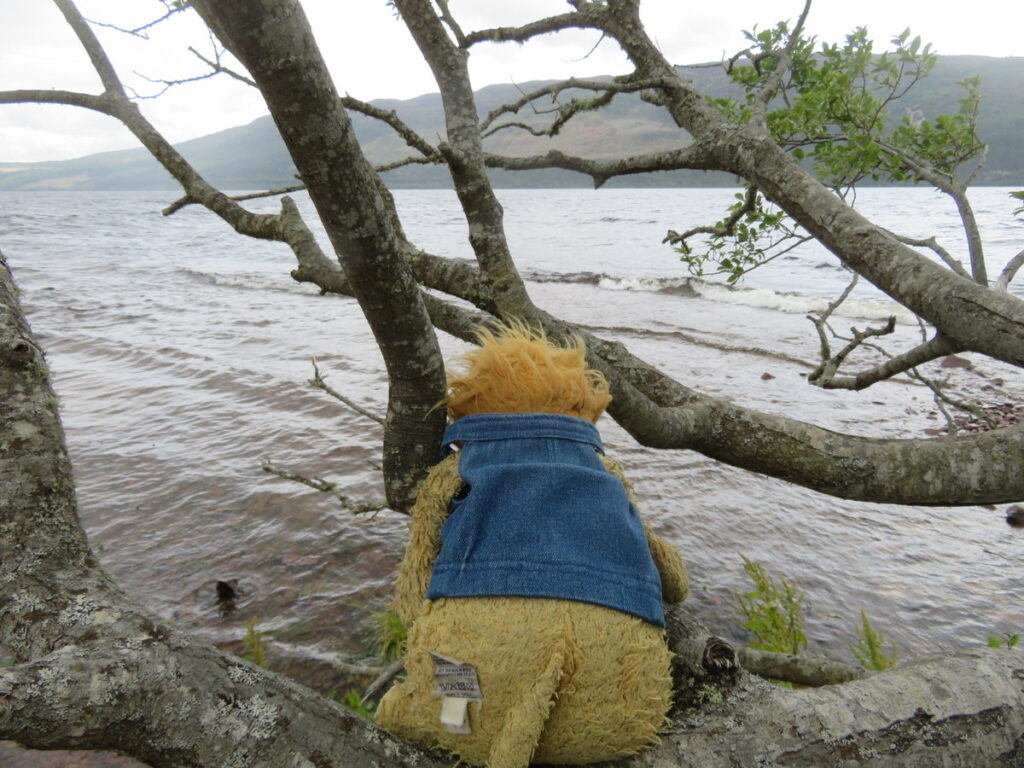
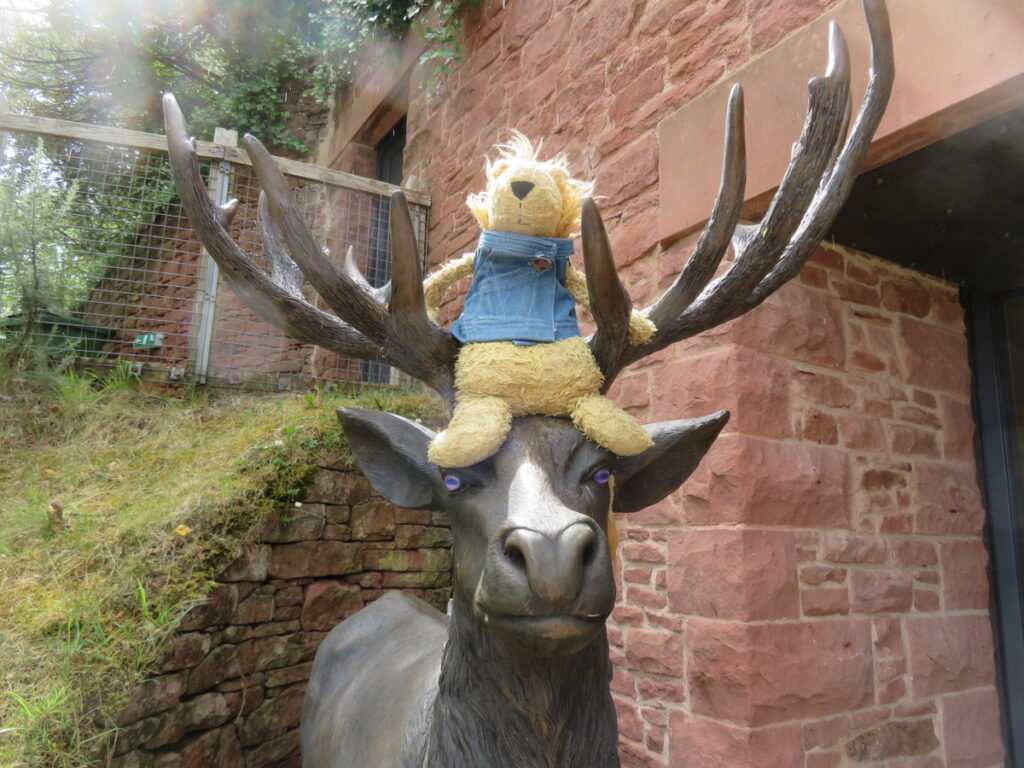
After lunch, we visited another castle! Cawdor Castle actually has a family living in it! In the 1300s, the Thane (clan chief) of Cawdor asked permission to build a new castle for his family. He had a dream that he should pick the site wherever a donkey carrying a bucket of gold decided to lie down. So he loaded a donkey and followed it around until it lay down under a holly tree. That tree is still visible in the basements of the castle and dates to 1372 !
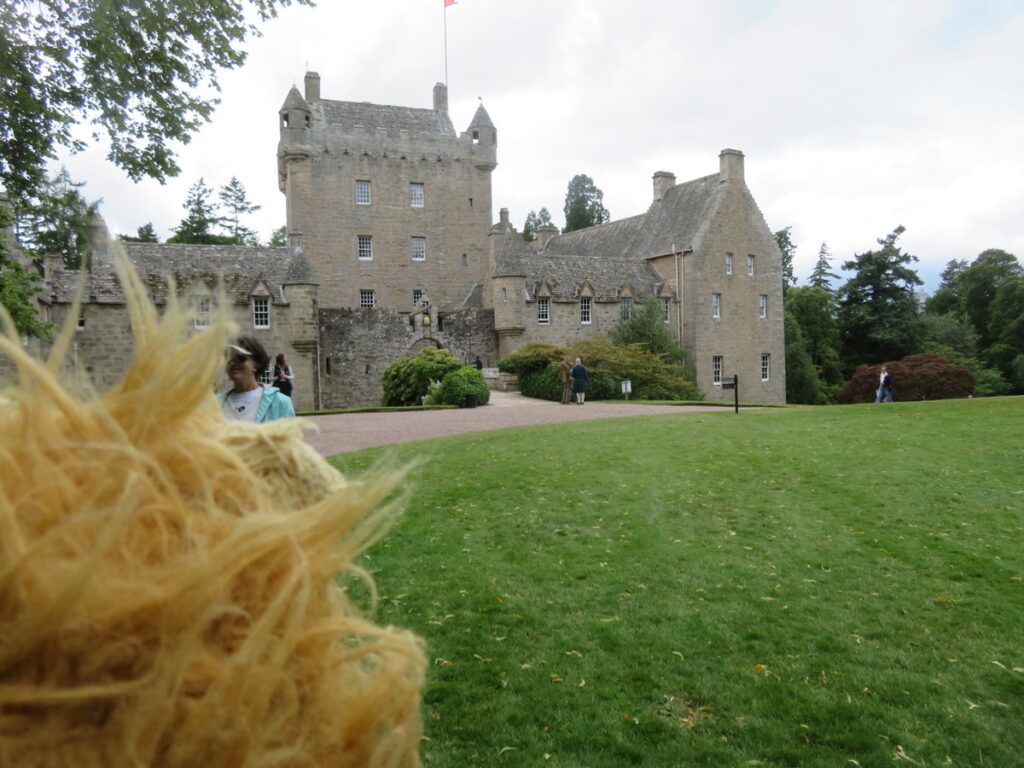
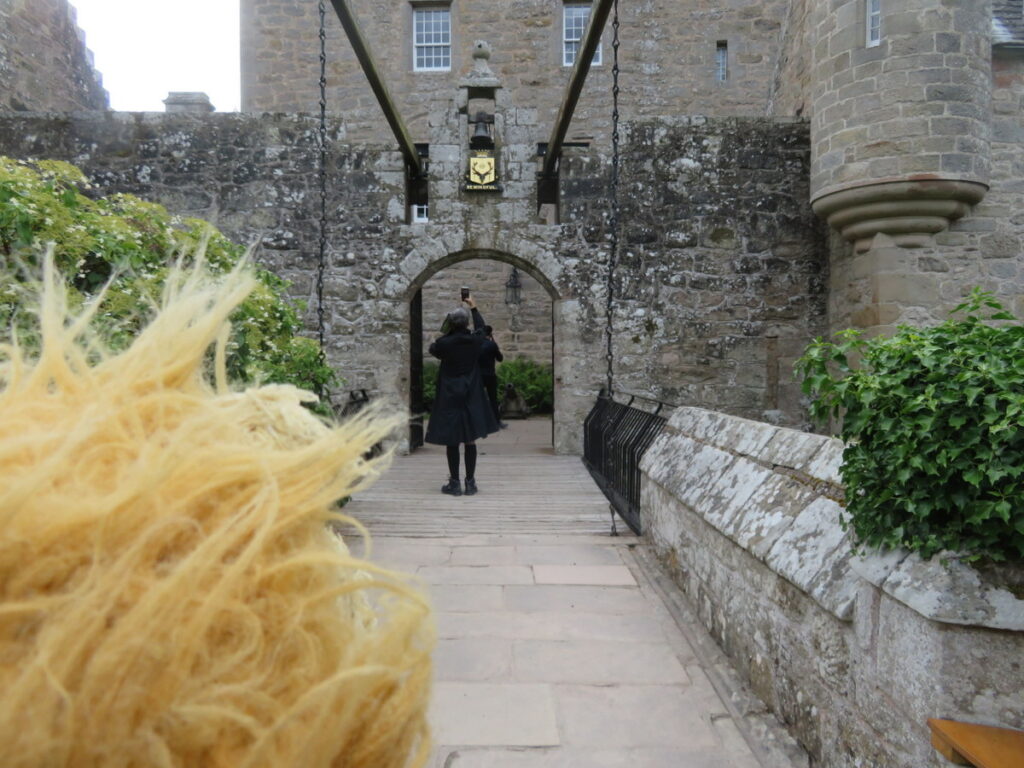
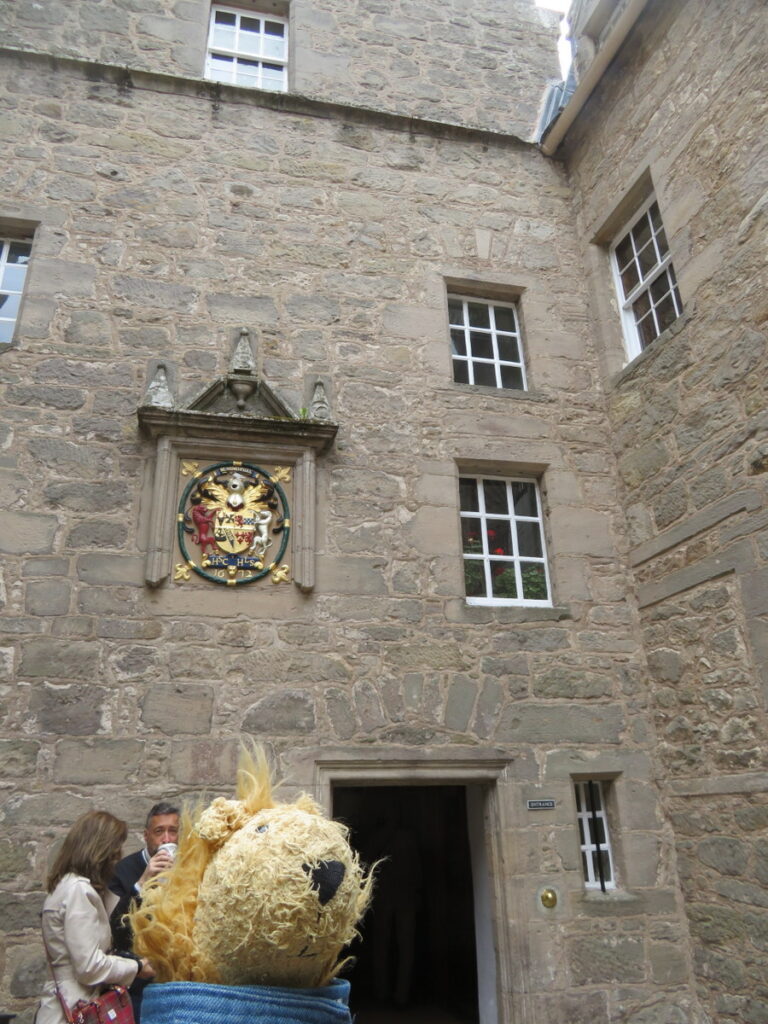
The rooms in the castle looked very comfortable! I could see all sorts of places a little lion could curl up. Below the furnished rooms, there was a secret dungeon room and a old kitchen with lots of copper and brass pots.
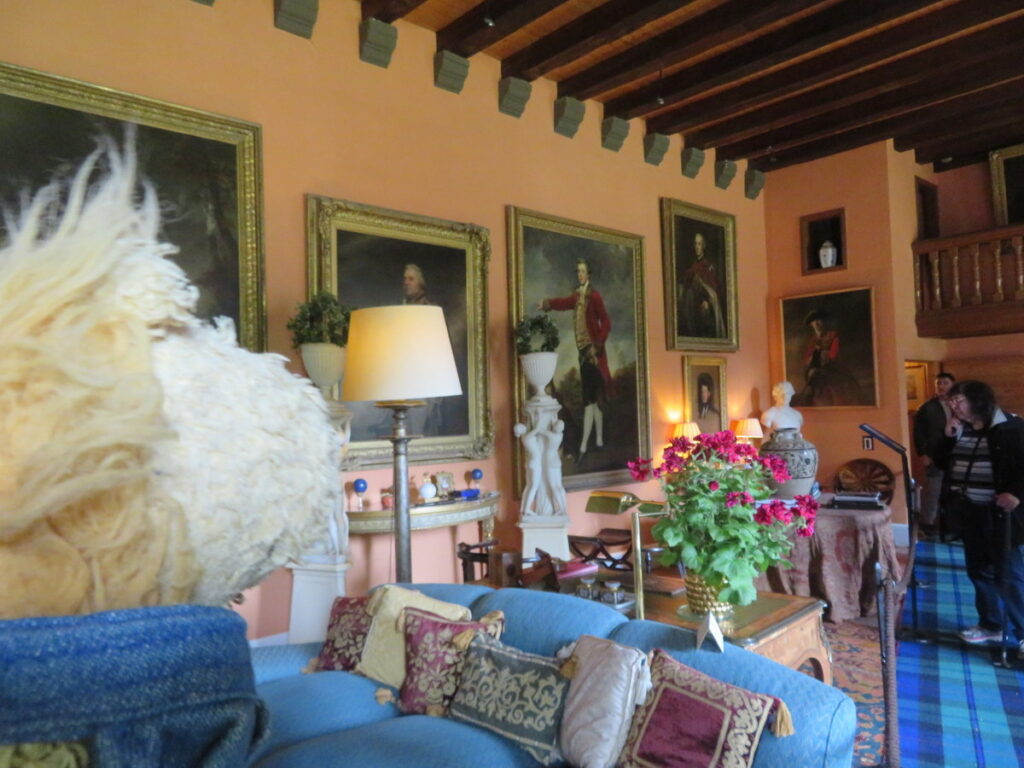
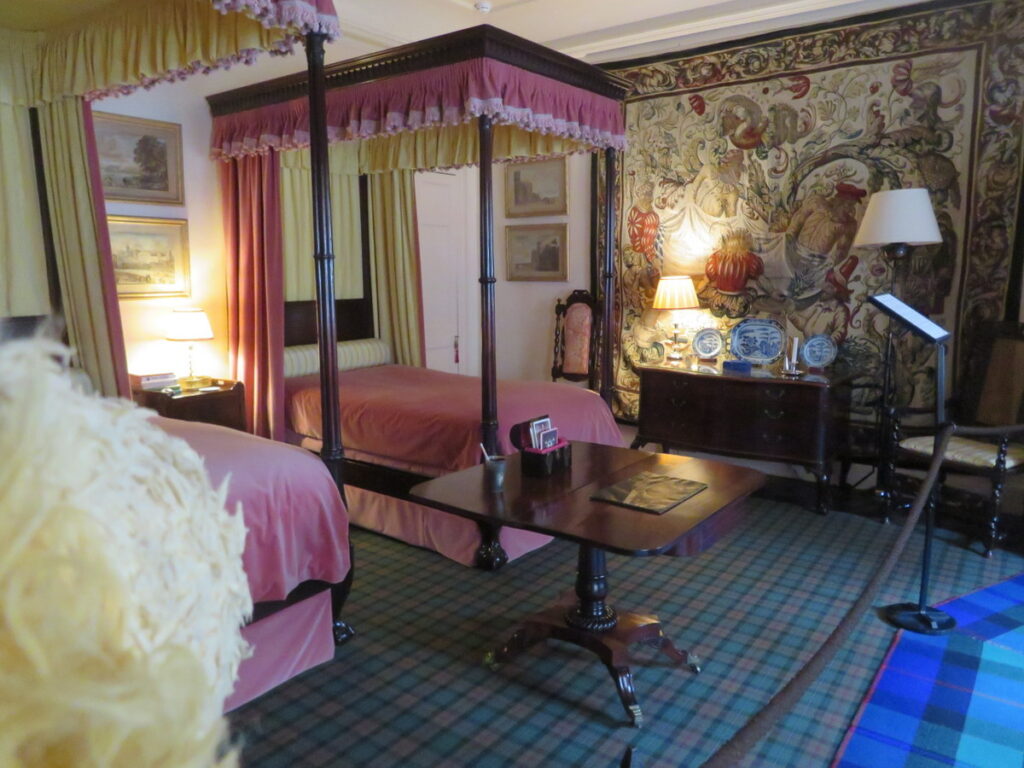
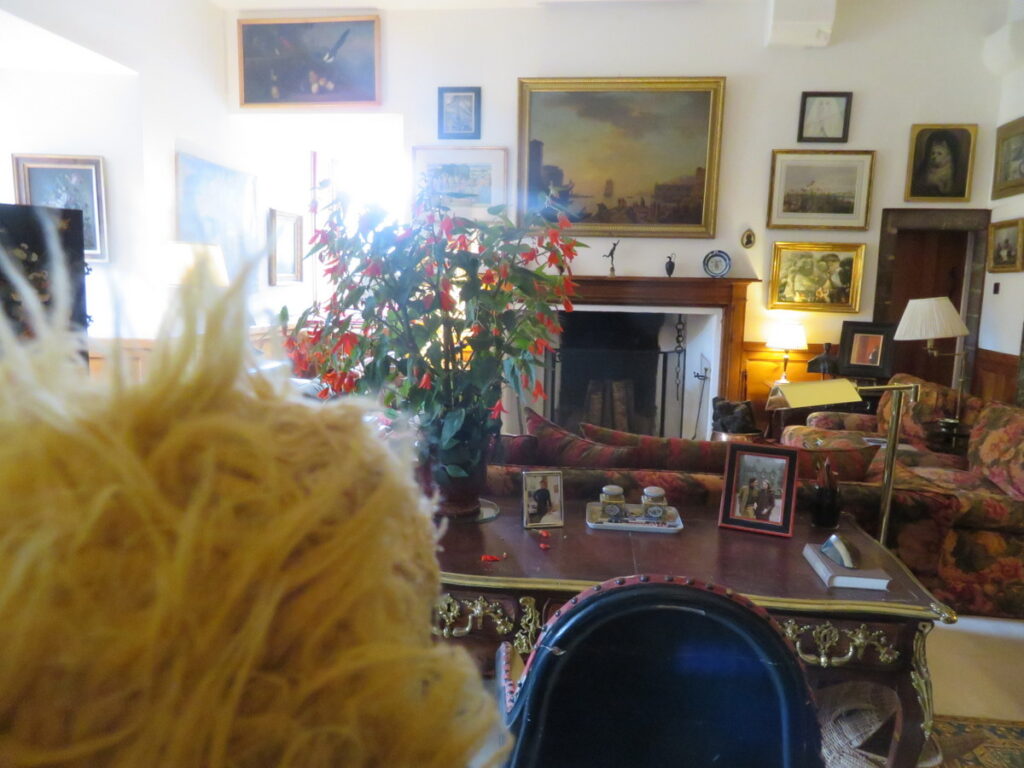
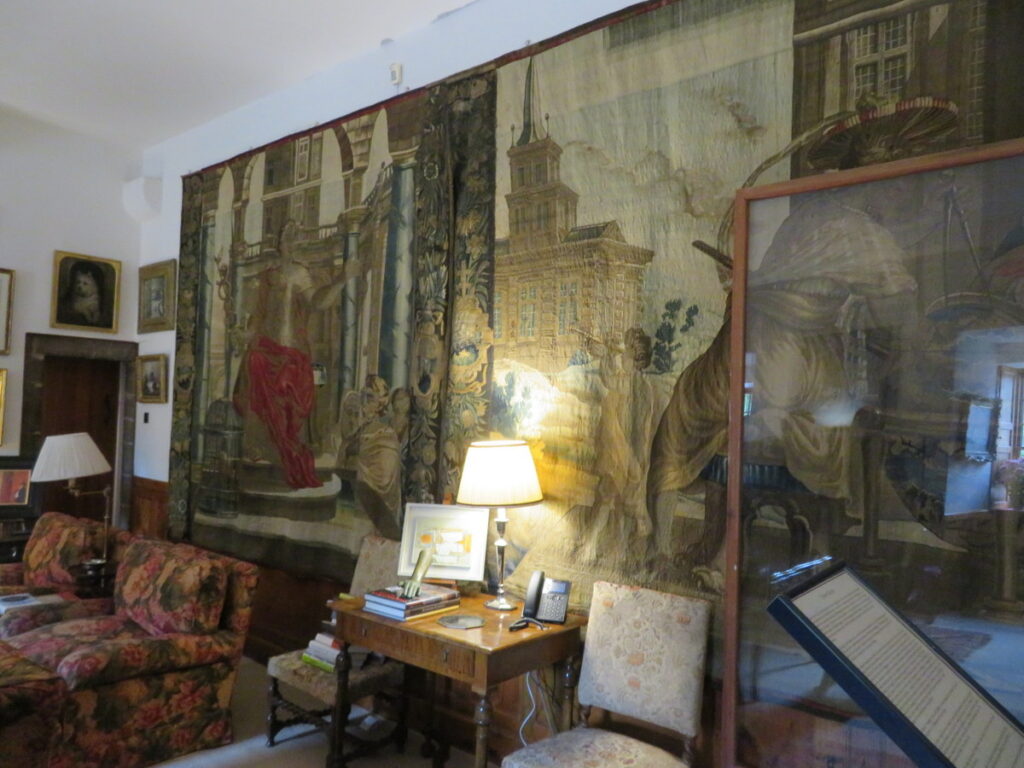
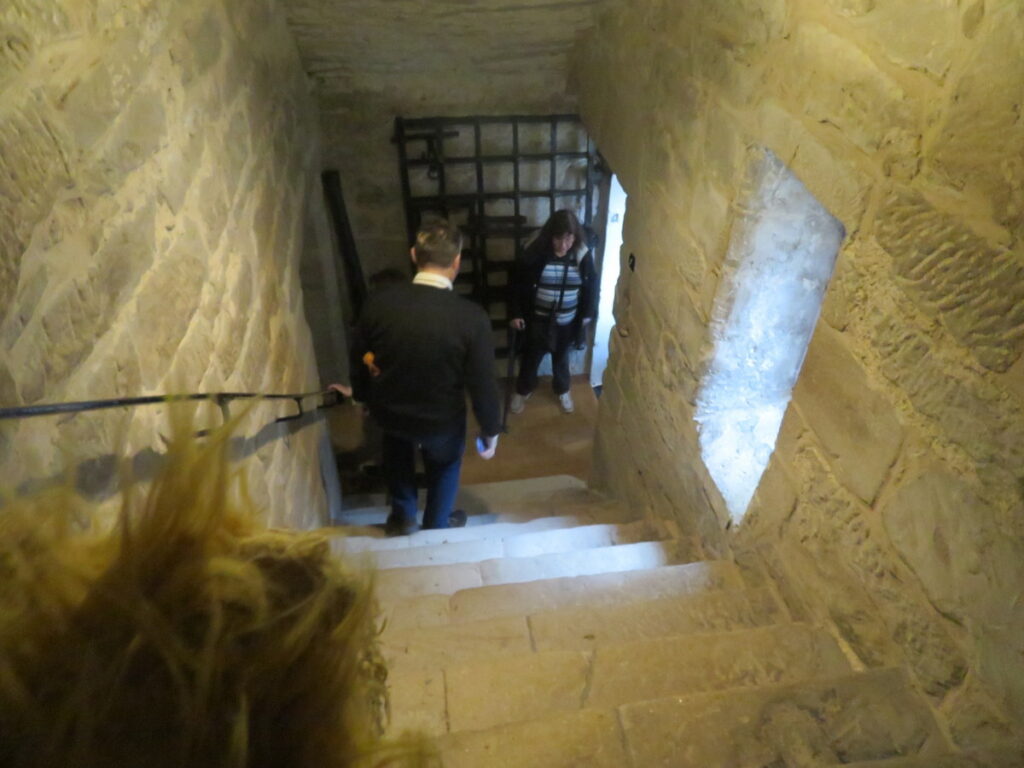
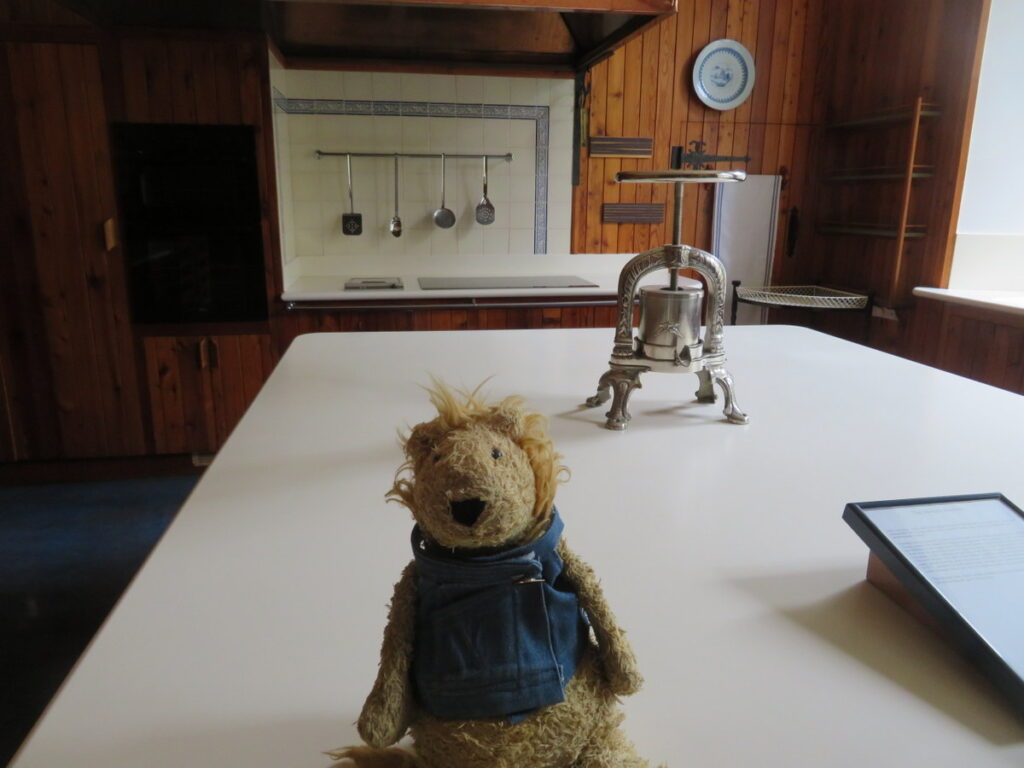
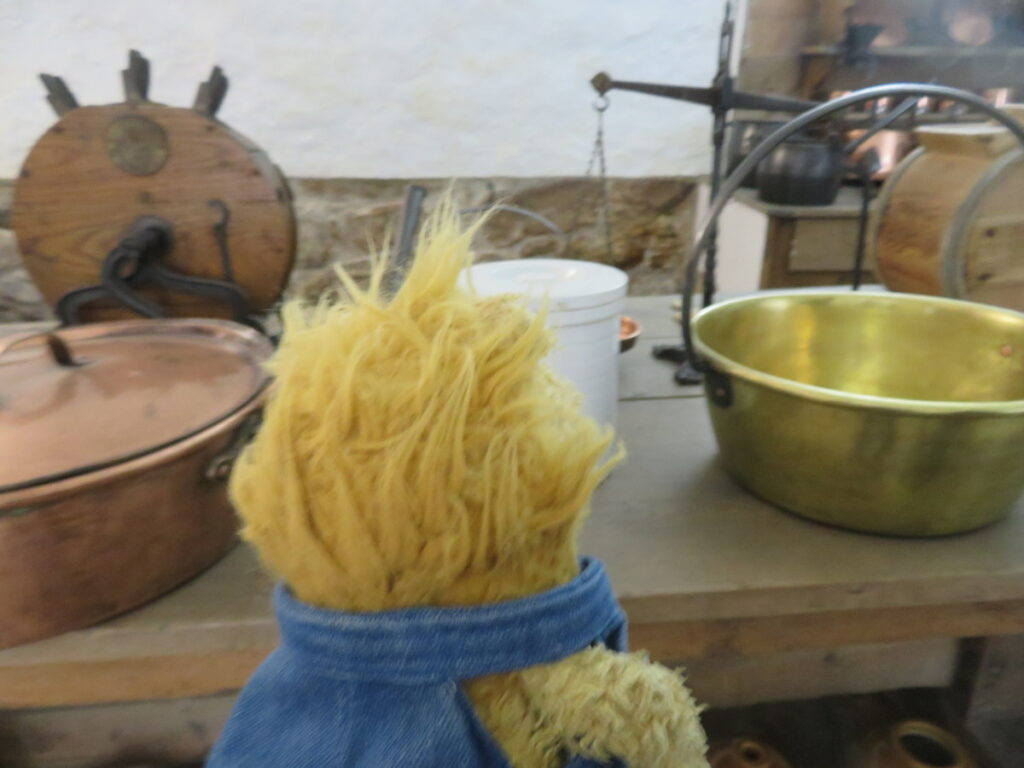
On my way to the gardens, I saw an old hand-pump fire truck. There was an old bicycle there, too! The gardens were very pretty and I made flower and fountain friends.

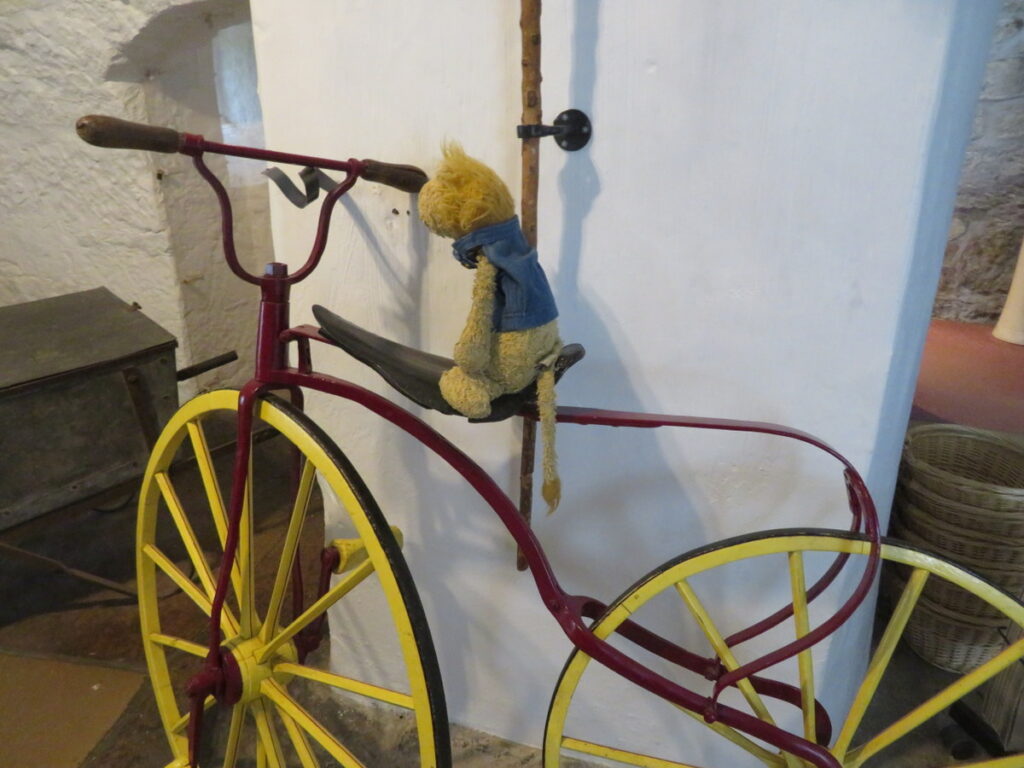
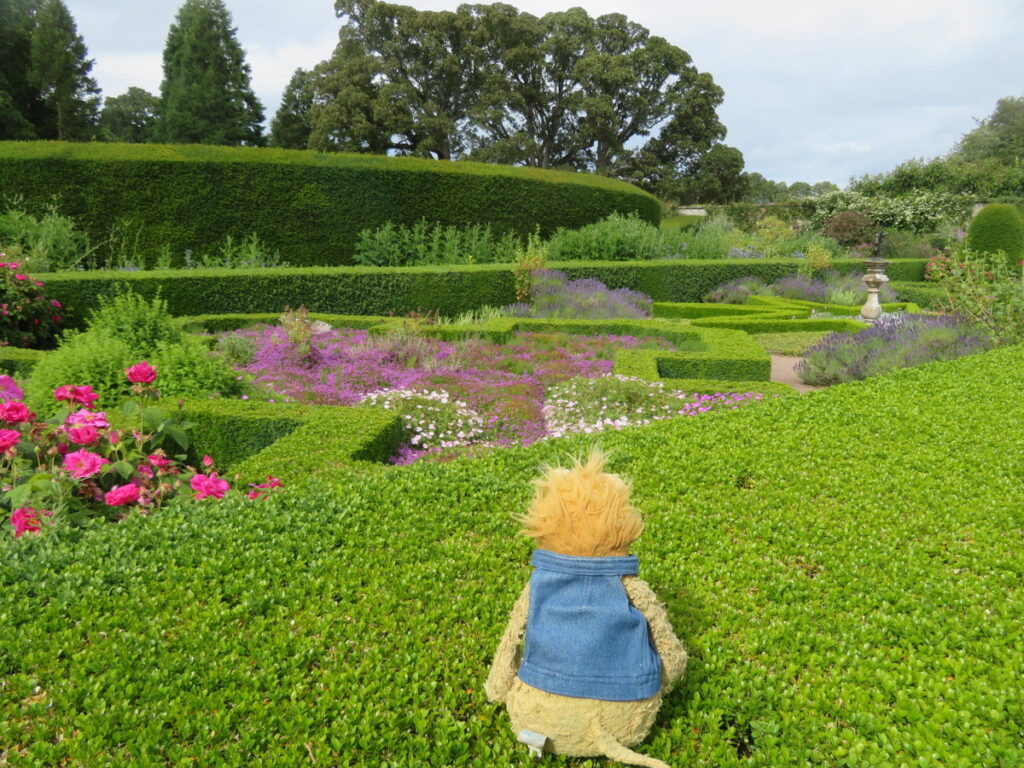
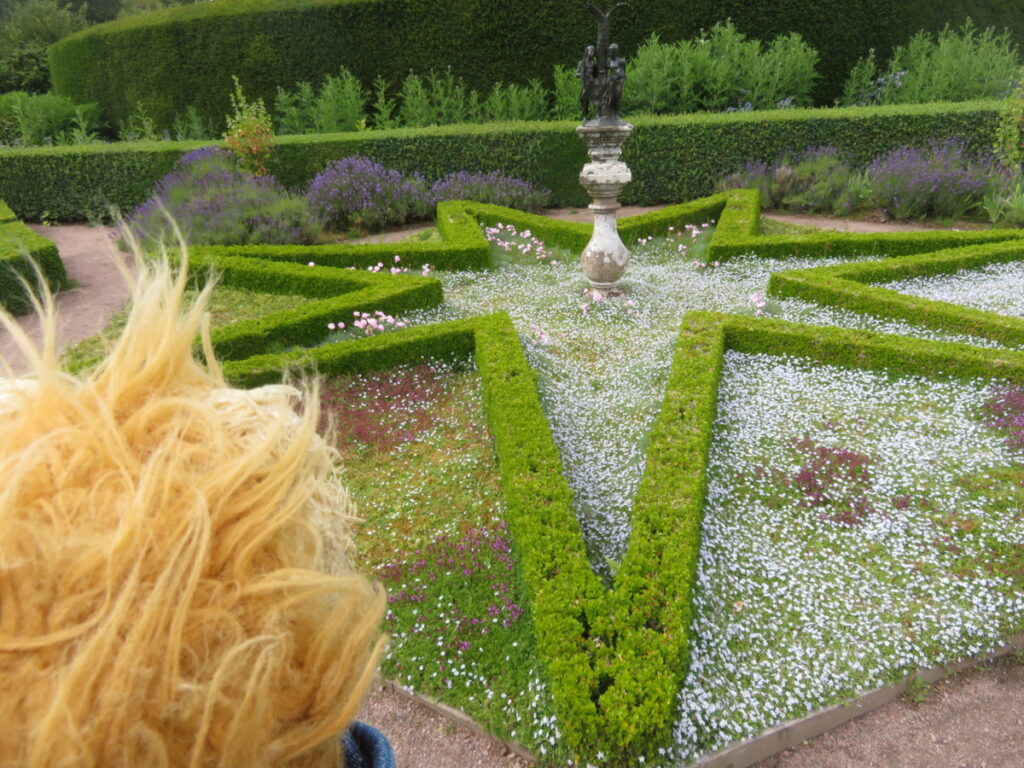
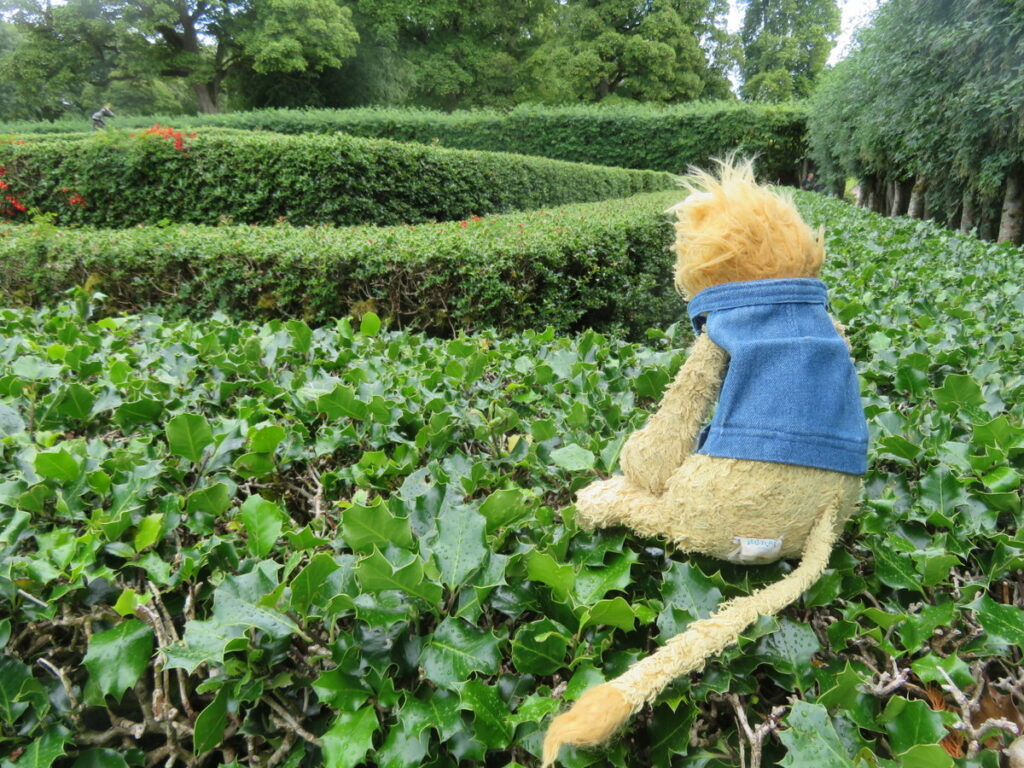
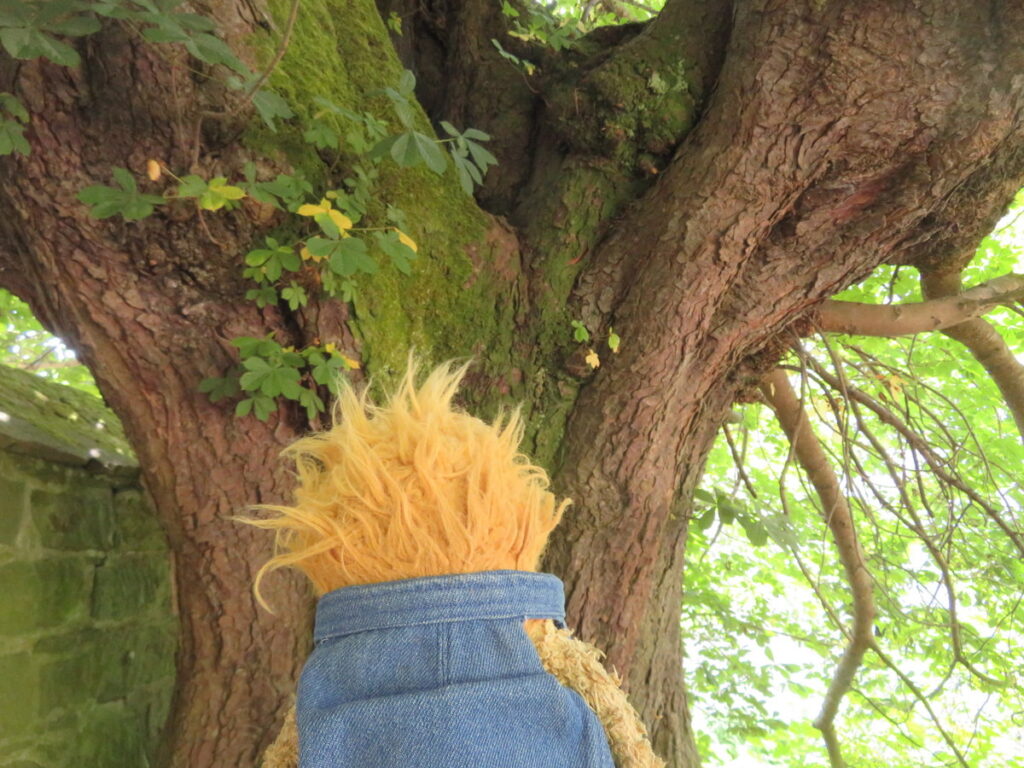
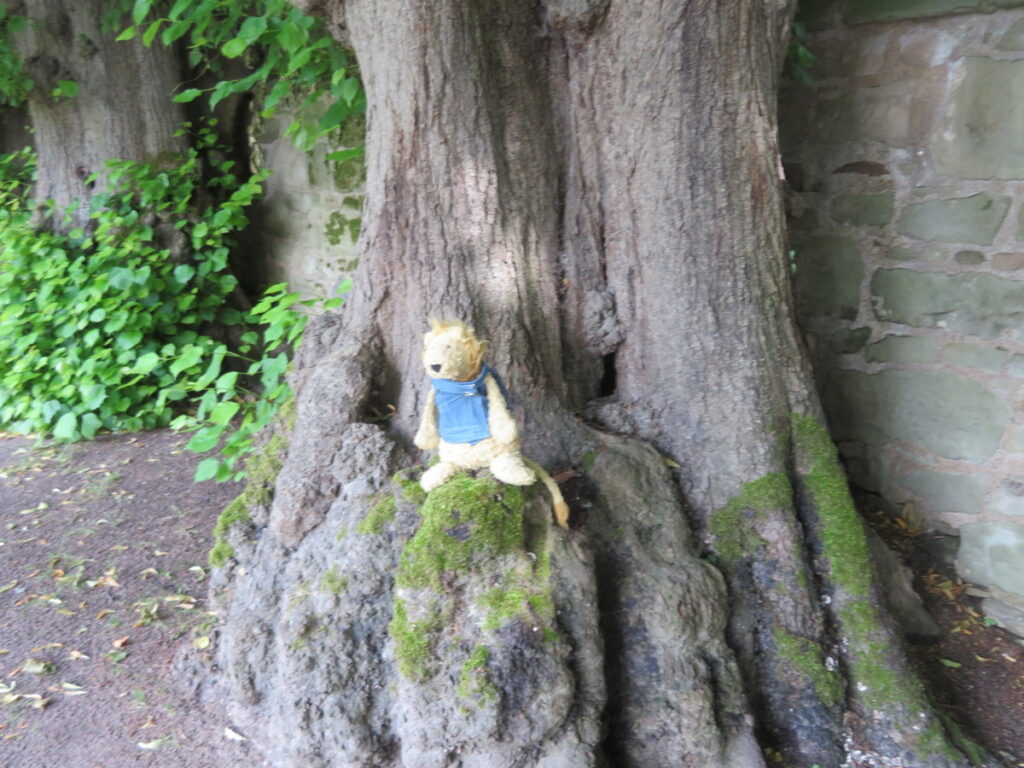
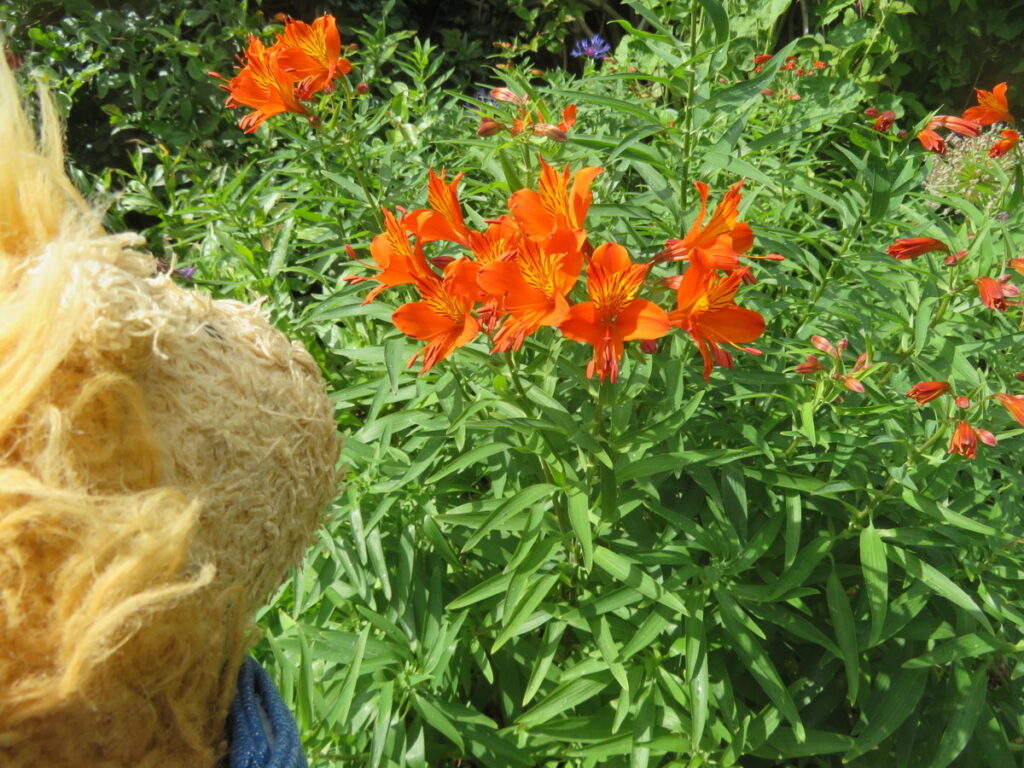
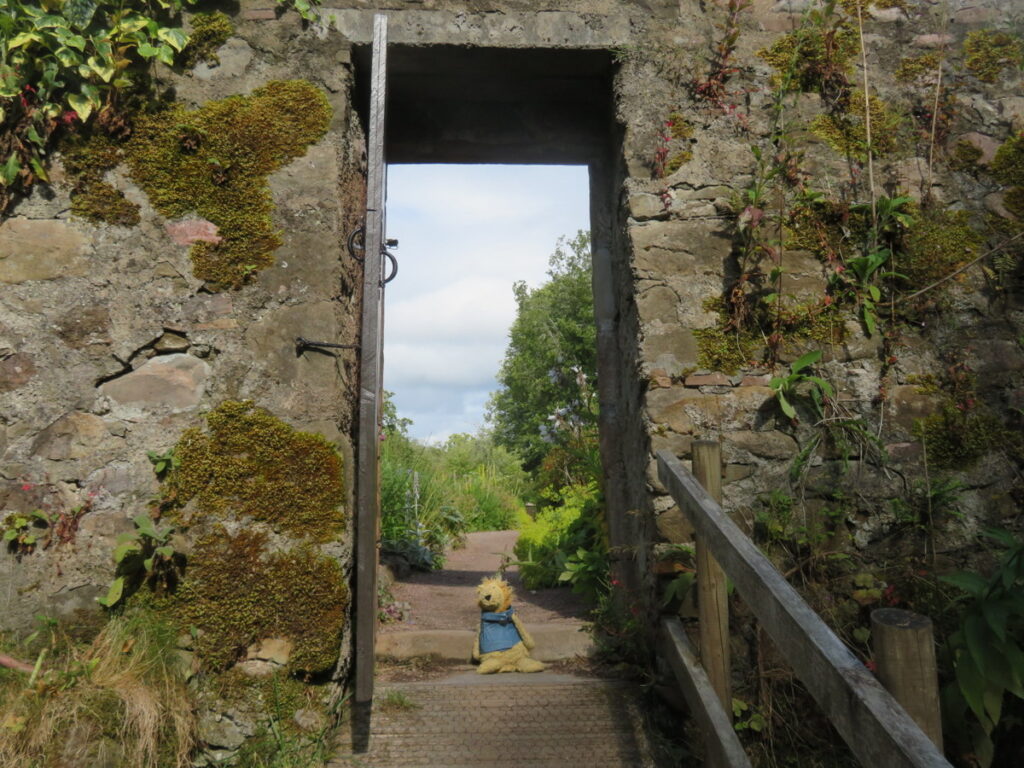
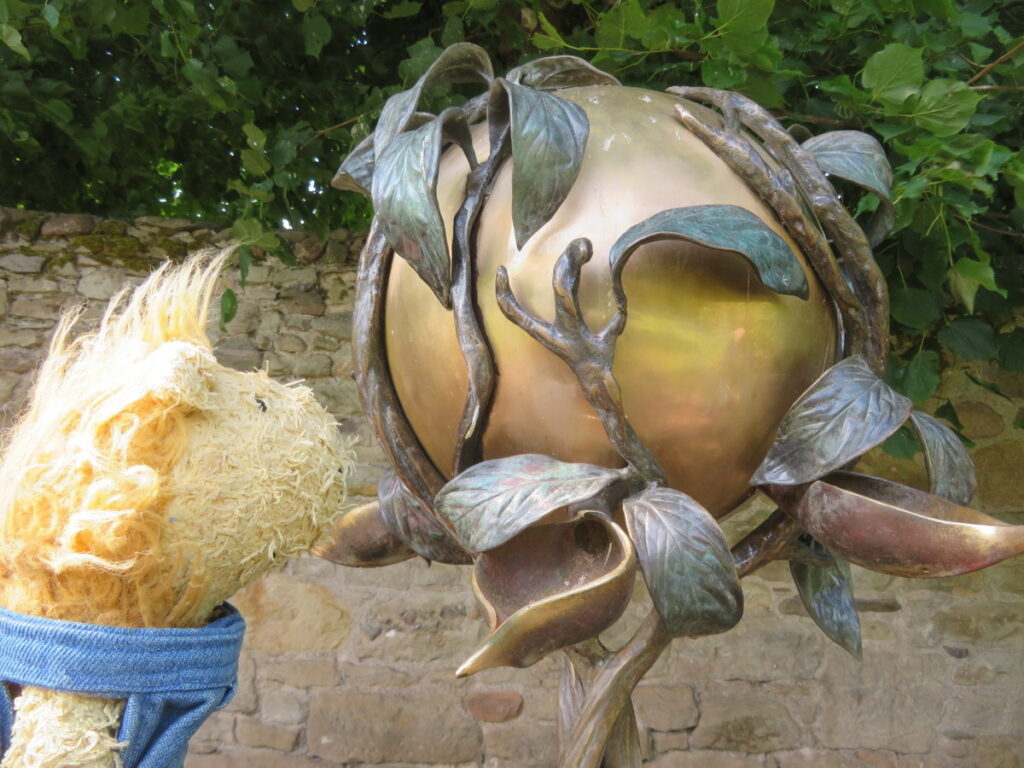
That was a very long tour! On the way back to the tour bus, I stopped to see a caravan decorated with the Cawdor family crest. When we got back to MS Marina, Grandpa and I posed for our usual photo on the balcony of our cabin. Can you find us? We watched a cloudy sunset much later from the same place.
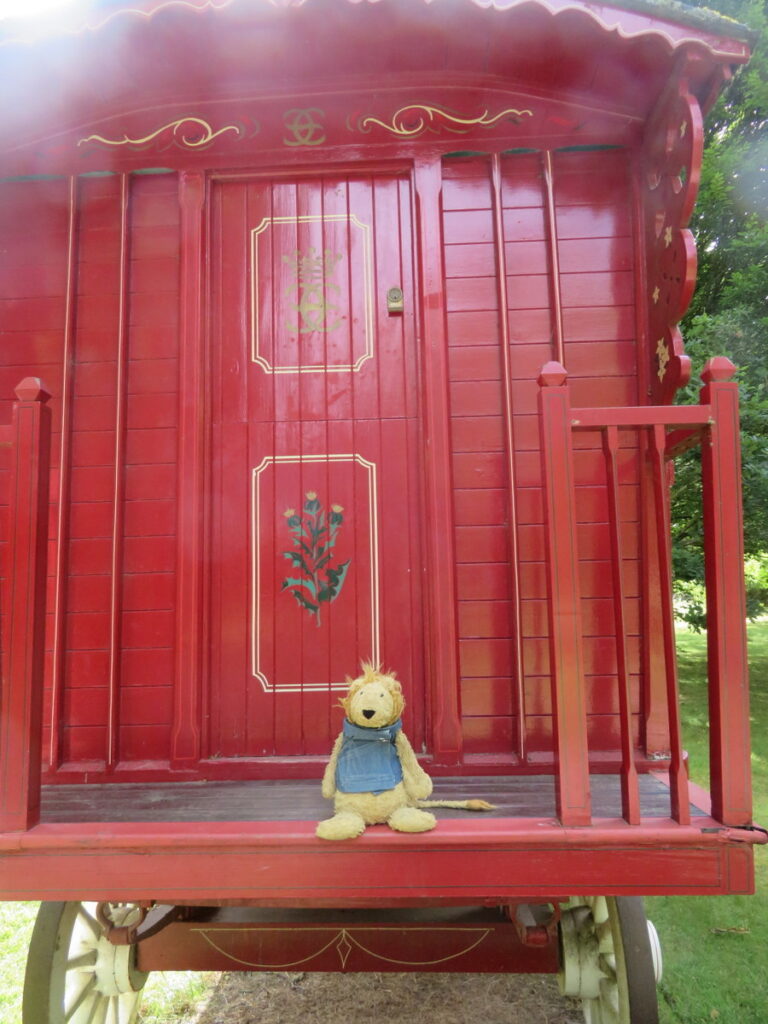

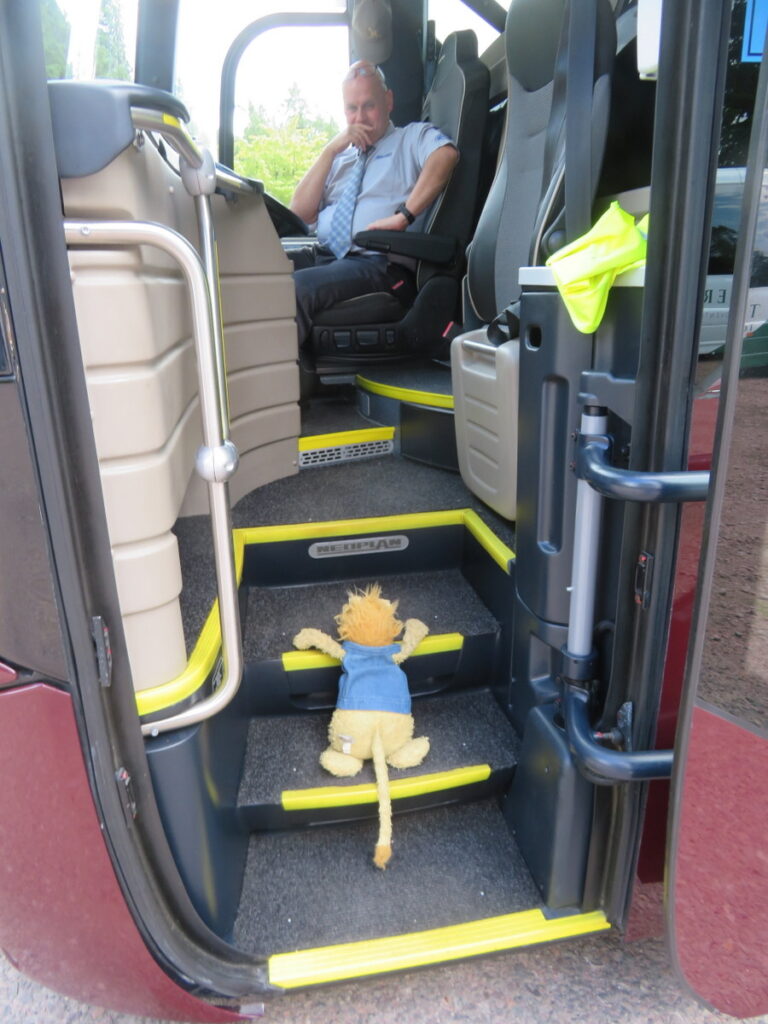
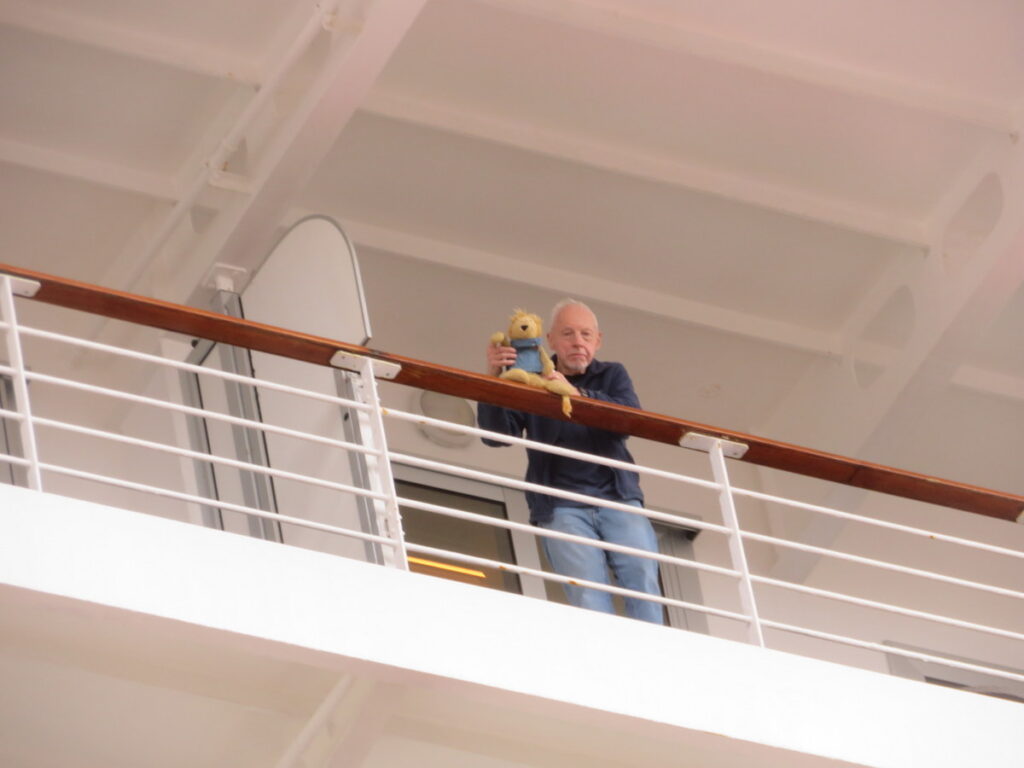
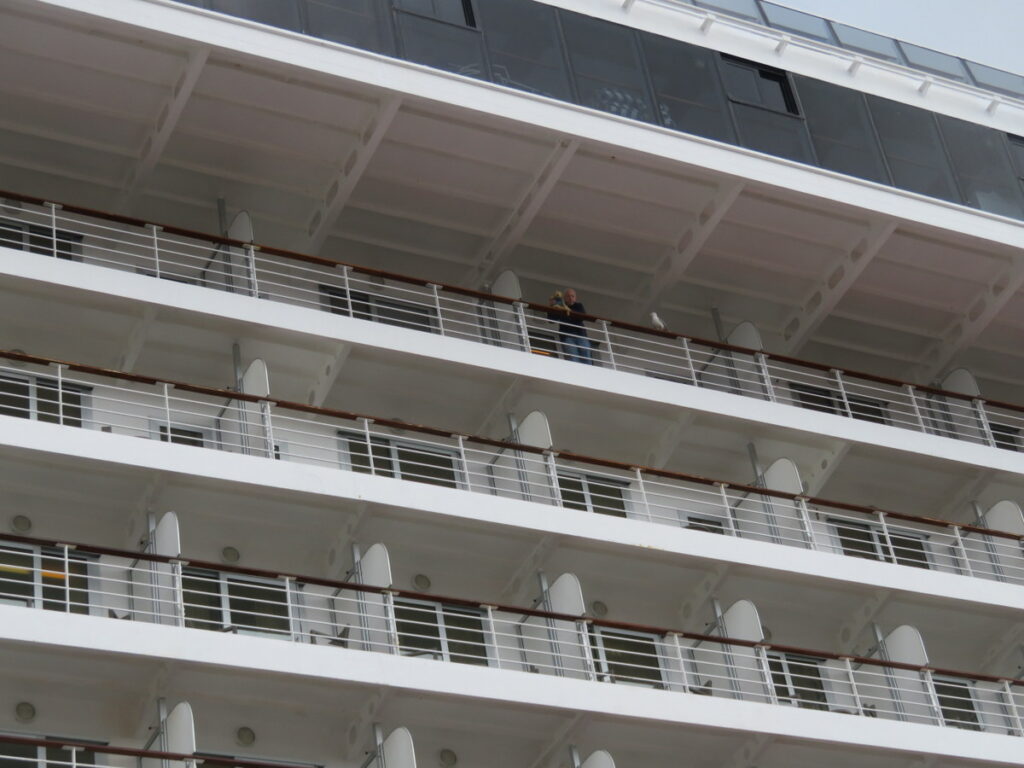
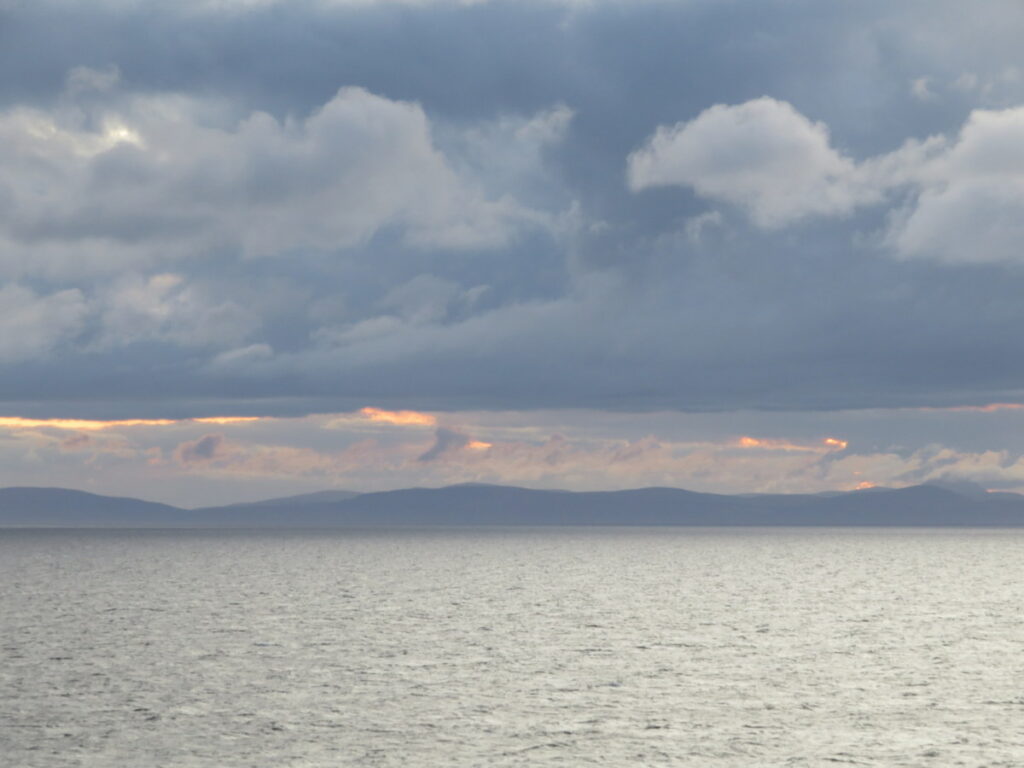
On the Fourth of July, we were even farther north, in the Shetland Islands. It’s about the same distance back to the Scottish mainland as it is to Norway! Our tour took us to a place where influences arrived from all directions! Jarlshof is a place where the foundations built by all those groups are revealed in one spot by the sea at the very southern tip of Shetland Mainland island.
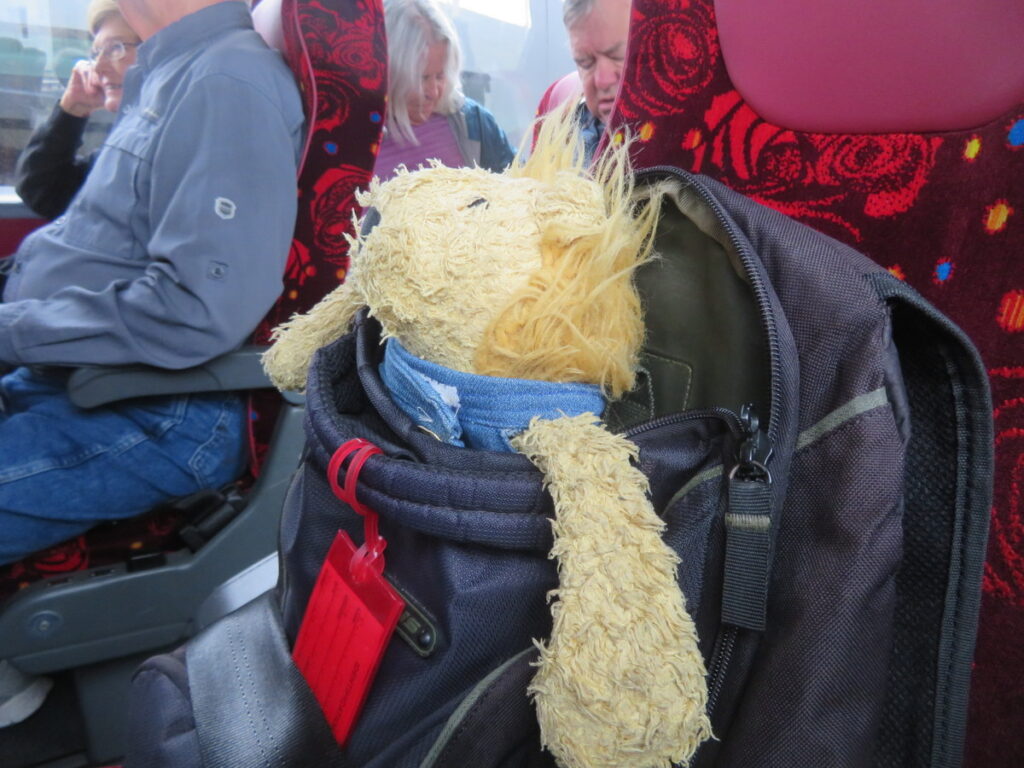
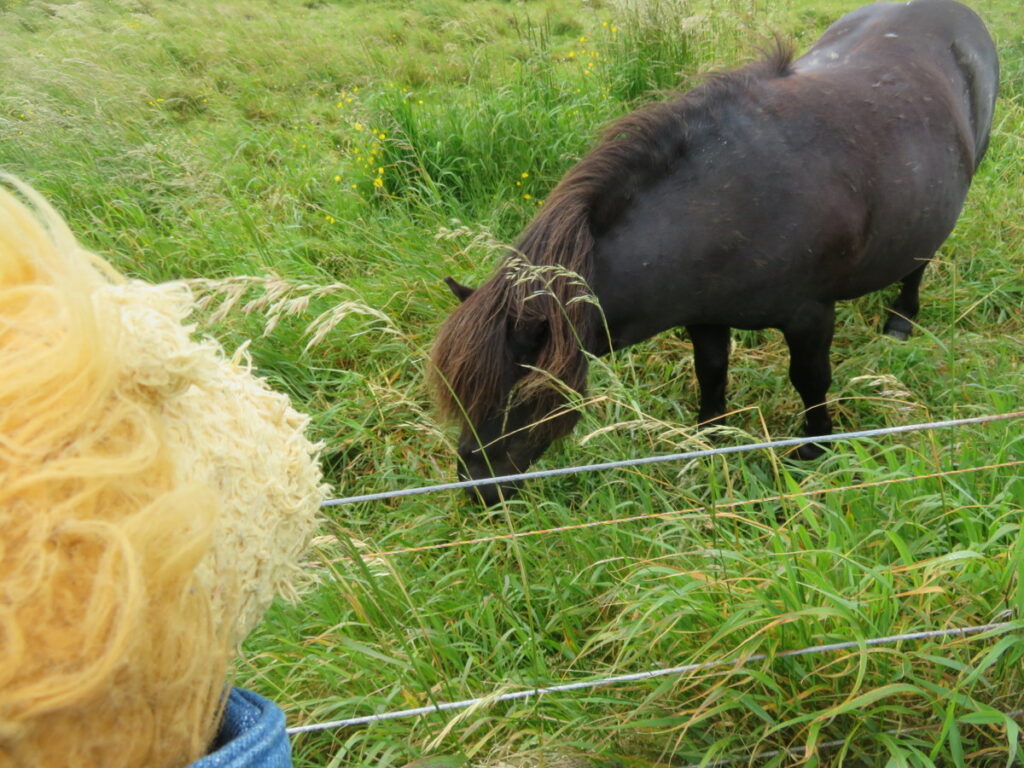
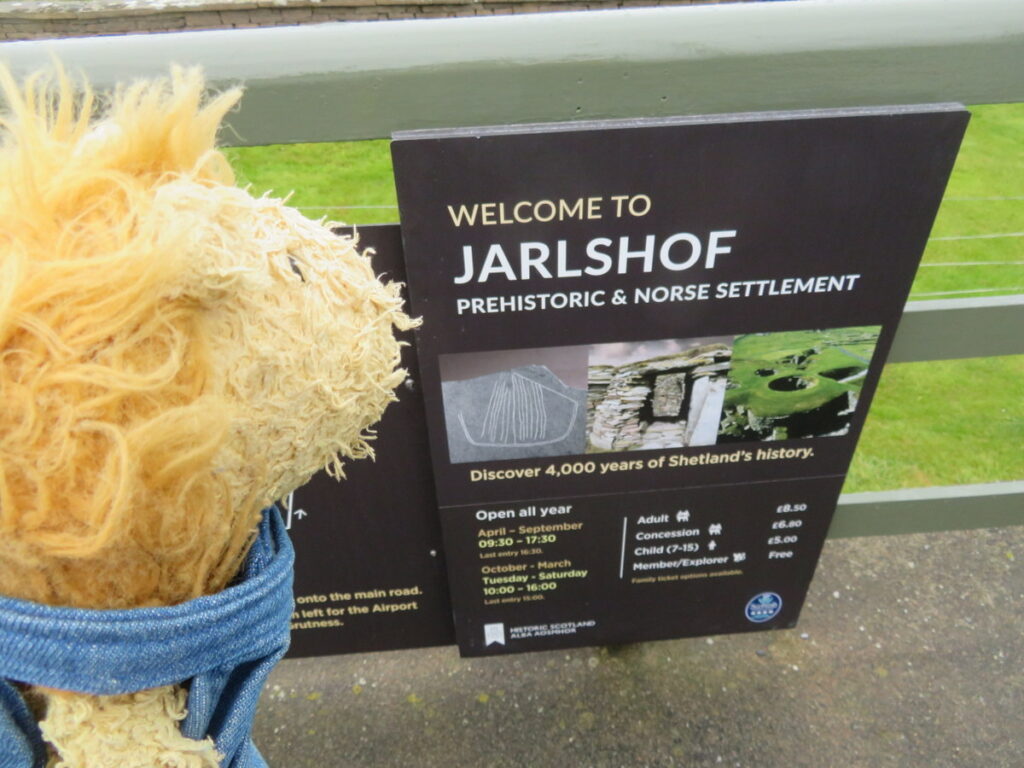
The first known human residents here were the Picts, whose Bronze Age oval house foundations date to 2500 B.C. Then there was evidence of Iron Age forges, wheel houses and brochs. A broch is a double-walled circular tower with stairs in between the walls. Some were as tall as 30 feet. Vikings from Norway arrived in the 800s A.D. and built the first structures with square corners. When the Shetland Islands were given to Scotland by Norway in 1469 A.D., the Scottish tradition of land ownership by Lairds prevailed. The final structure, a Laird’s house, was destroyed during a clan quarrel in the 1700s. We walked around everything!

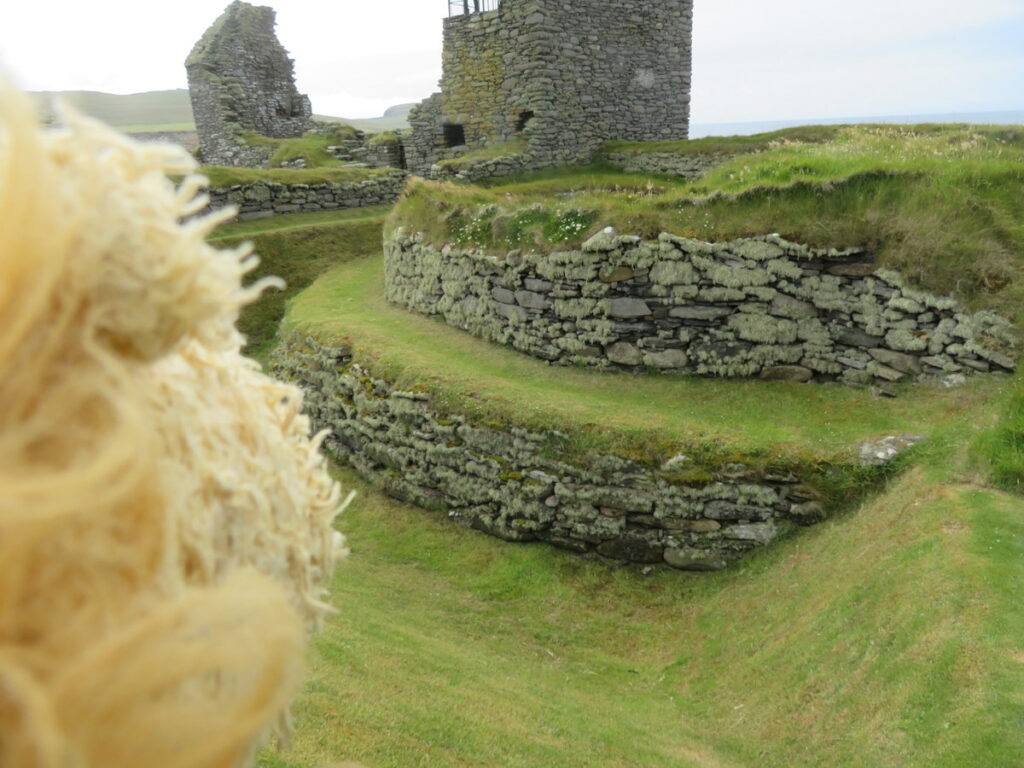
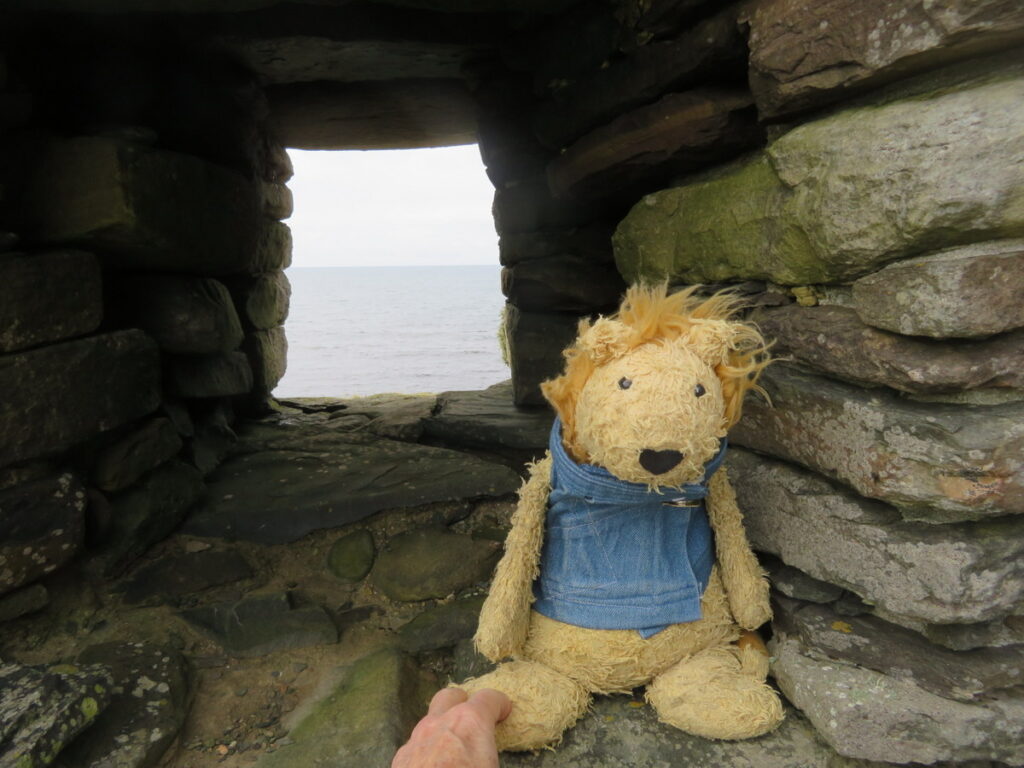
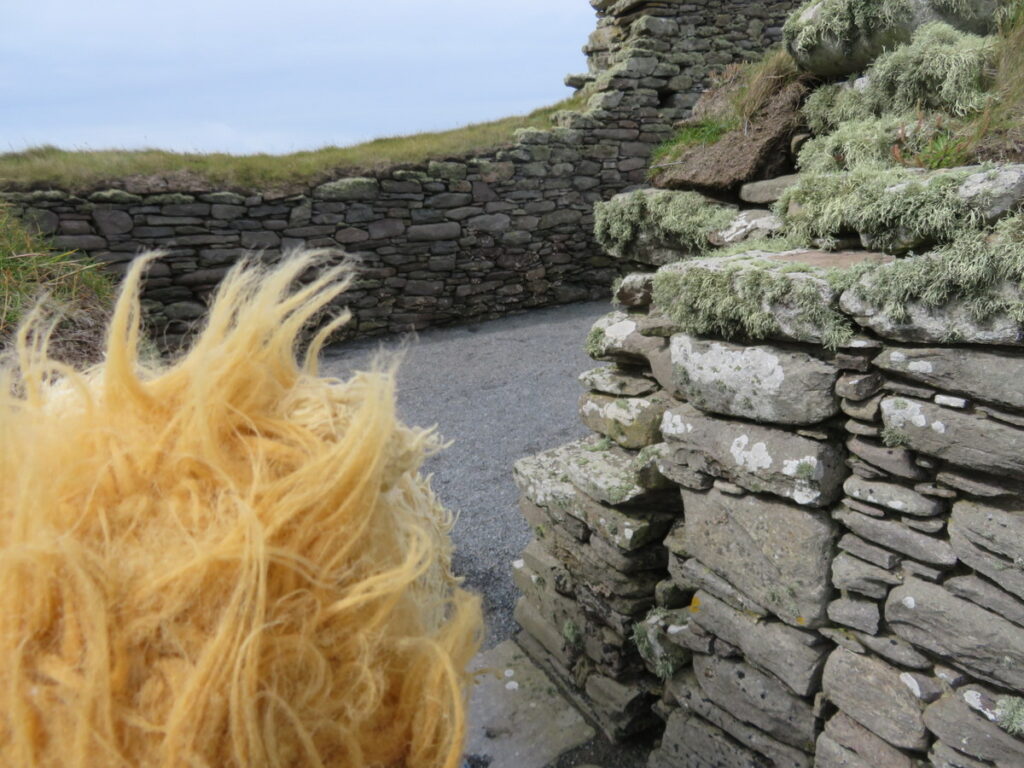
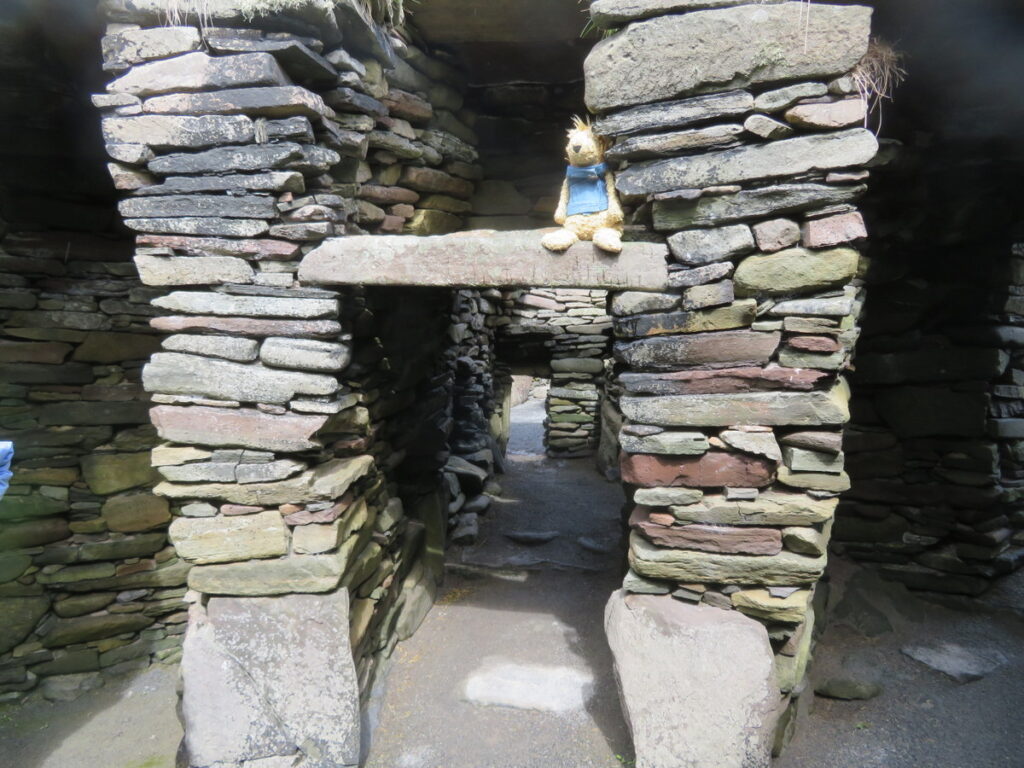
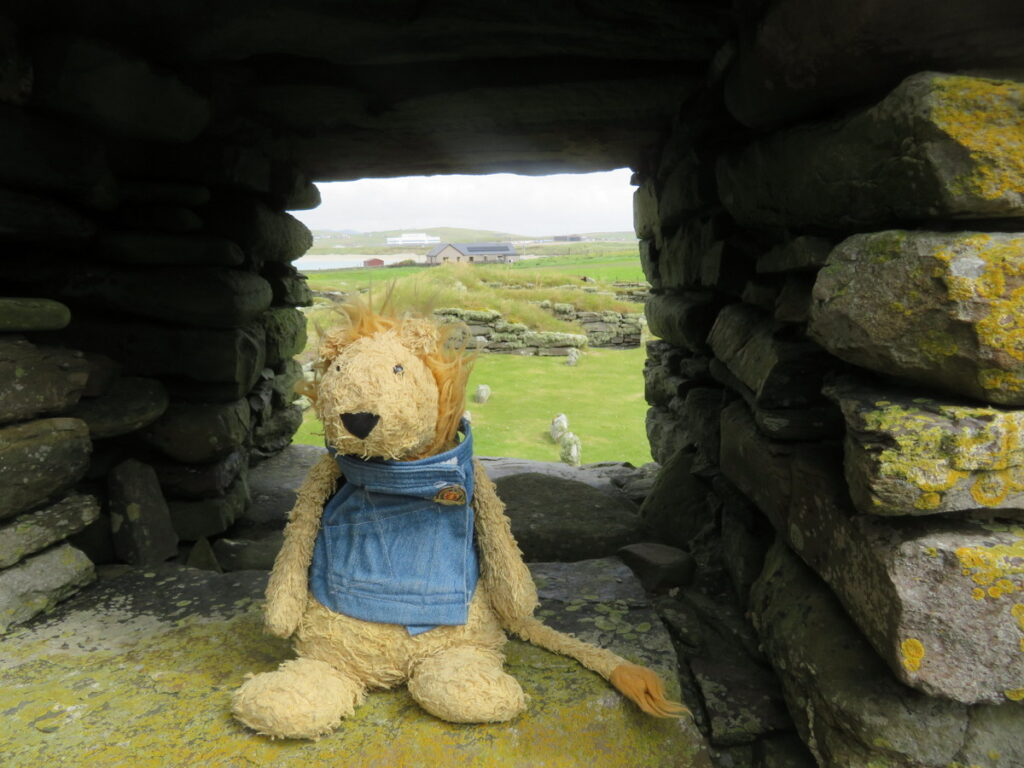
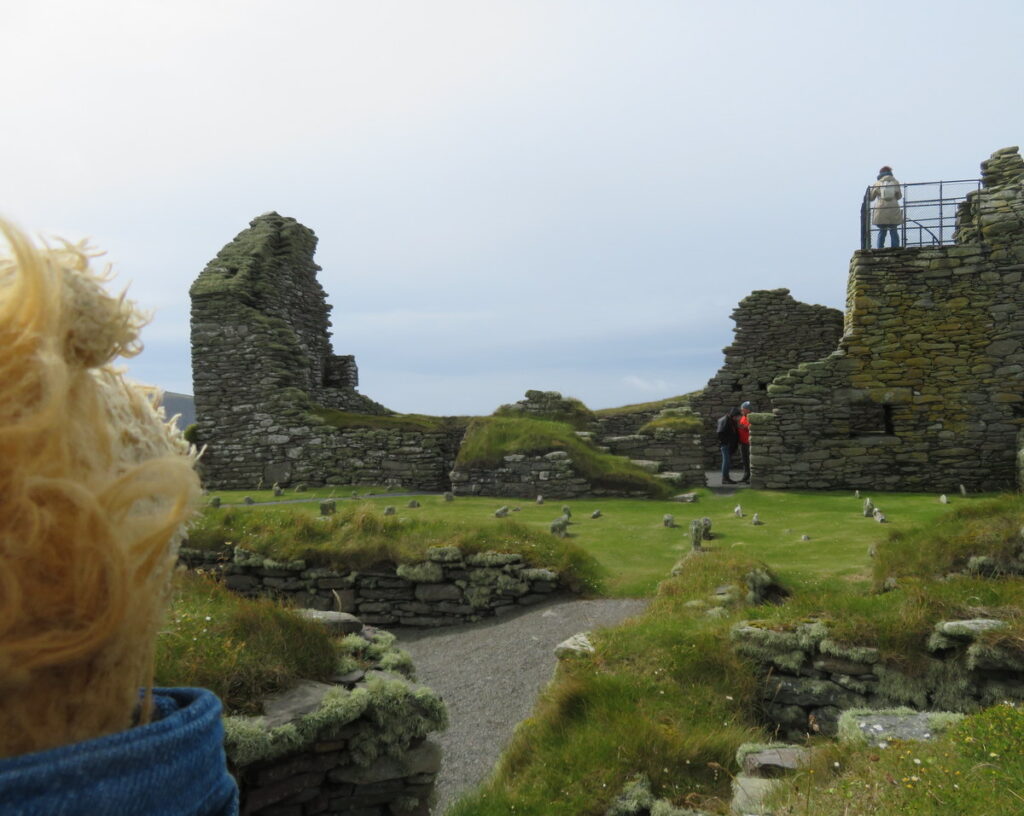
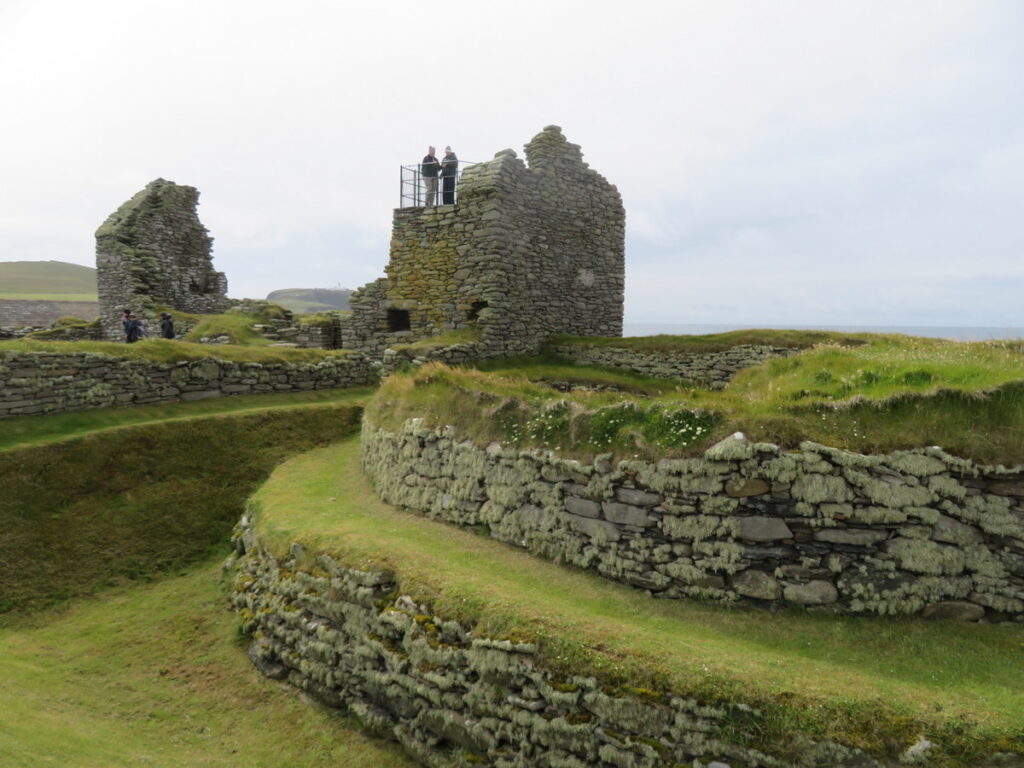
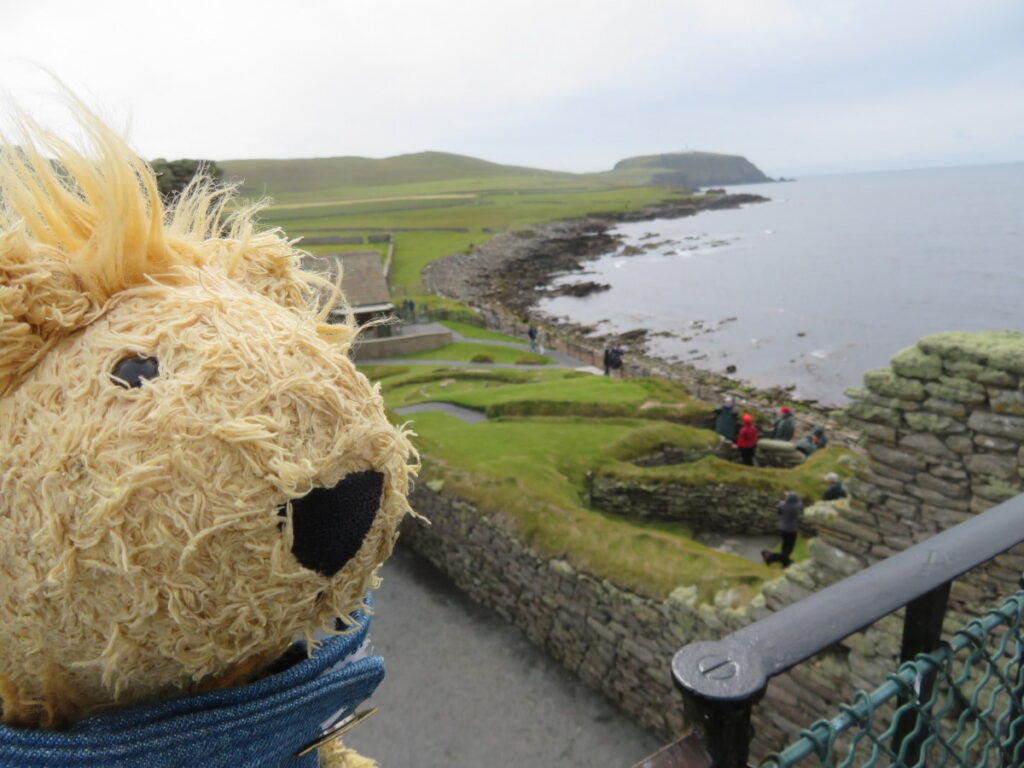
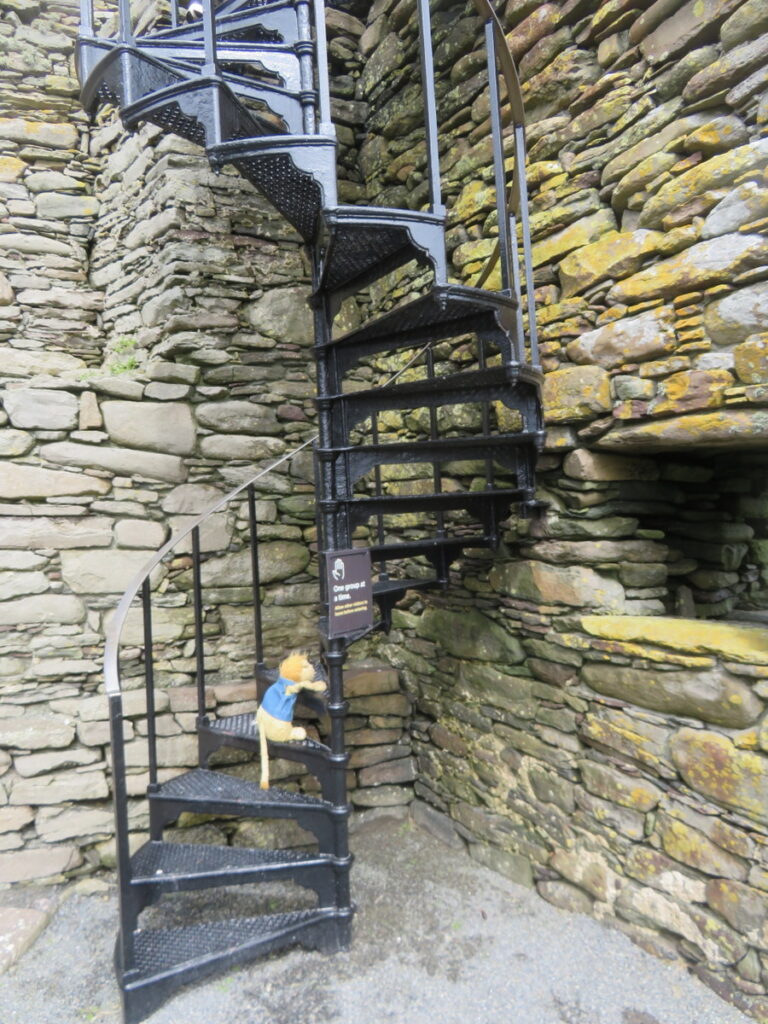
The Shetland Islands are known for their sheep and woolen fabrics. Before we returned to the ship, we stopped at a visitors center in Hoswick. I saw an old loom for weaving tweed – a very close-knit and sturdy fabric. I made some new friends, too! Lambs and their mothers were grazing everywhere! Our guide told us that when the lambs are born, they and their mothers have numbers painted on their fleece. That way they can be reunited if they get separated.
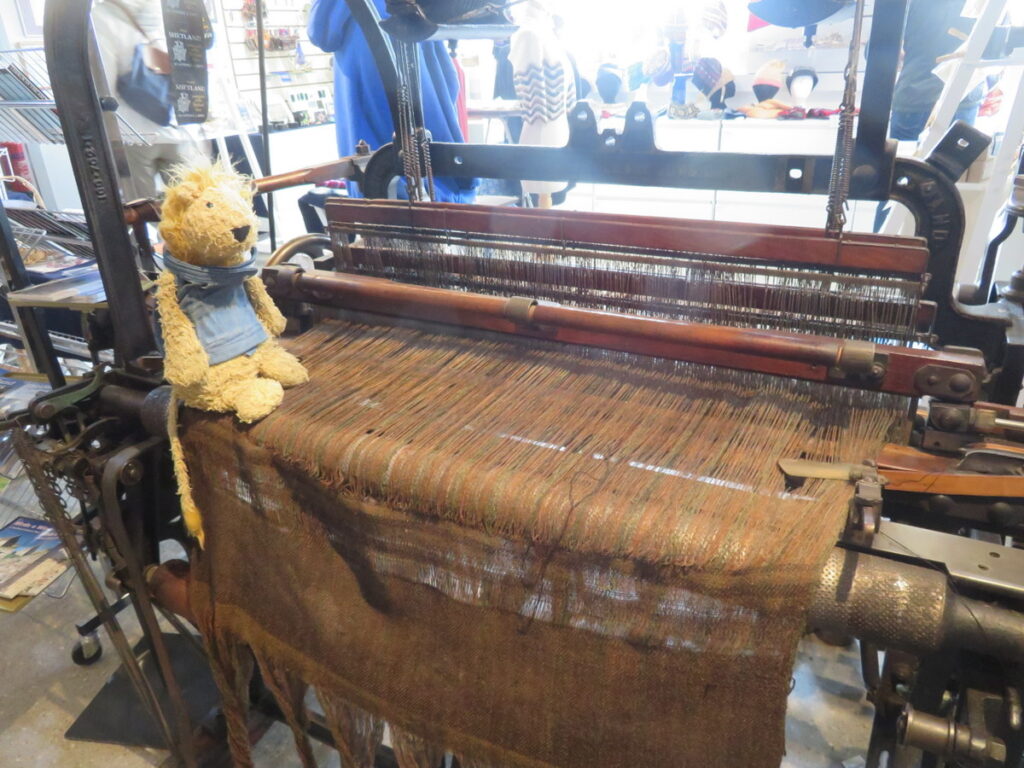
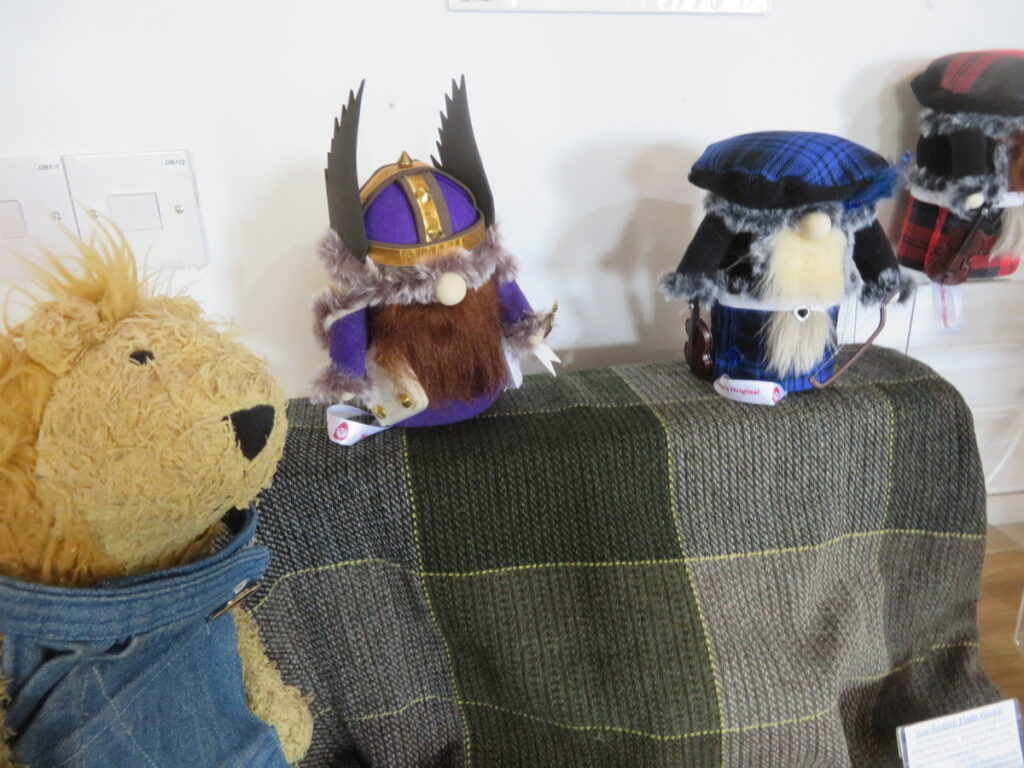
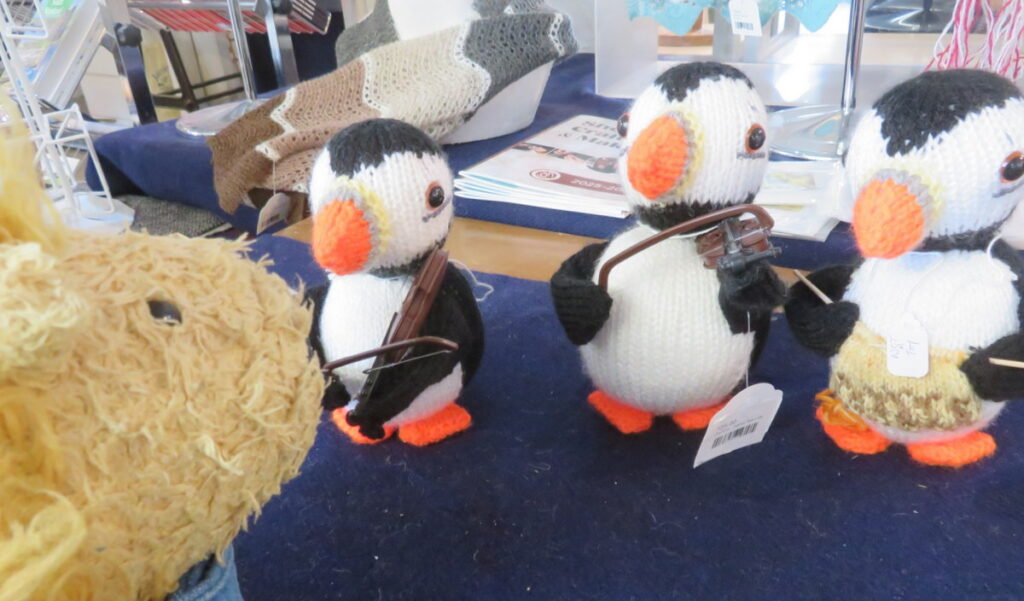
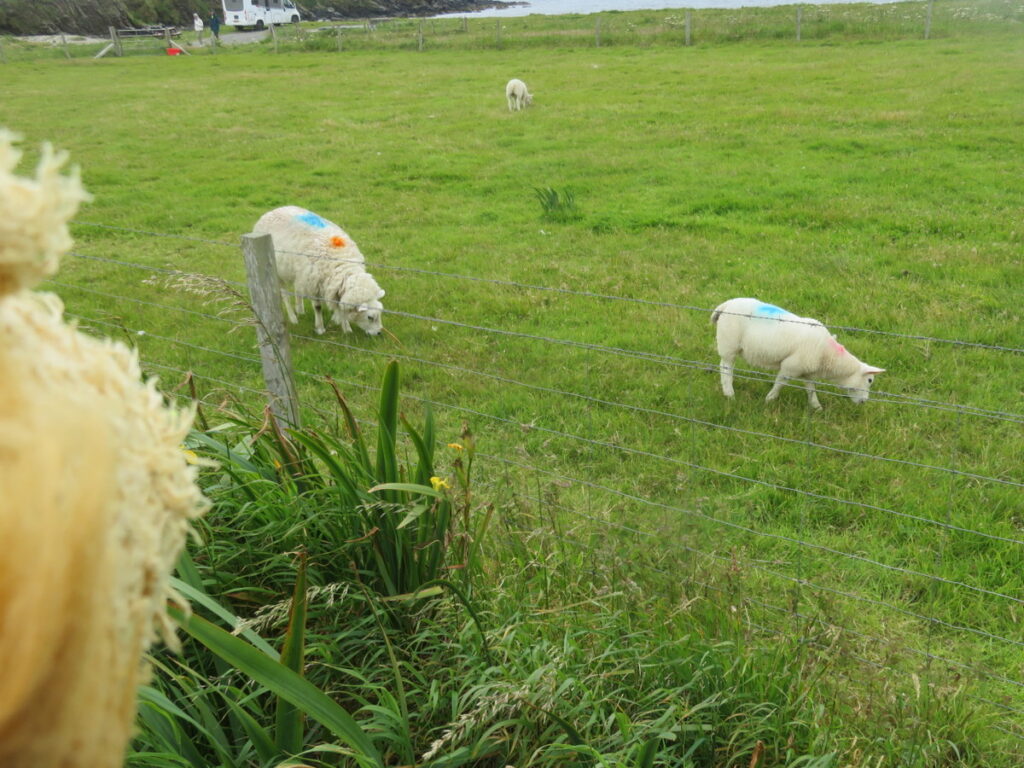
By the time we got back to MS Marina, it was raining! Of course I went to tea. The ship was decorated for Fourth of July!
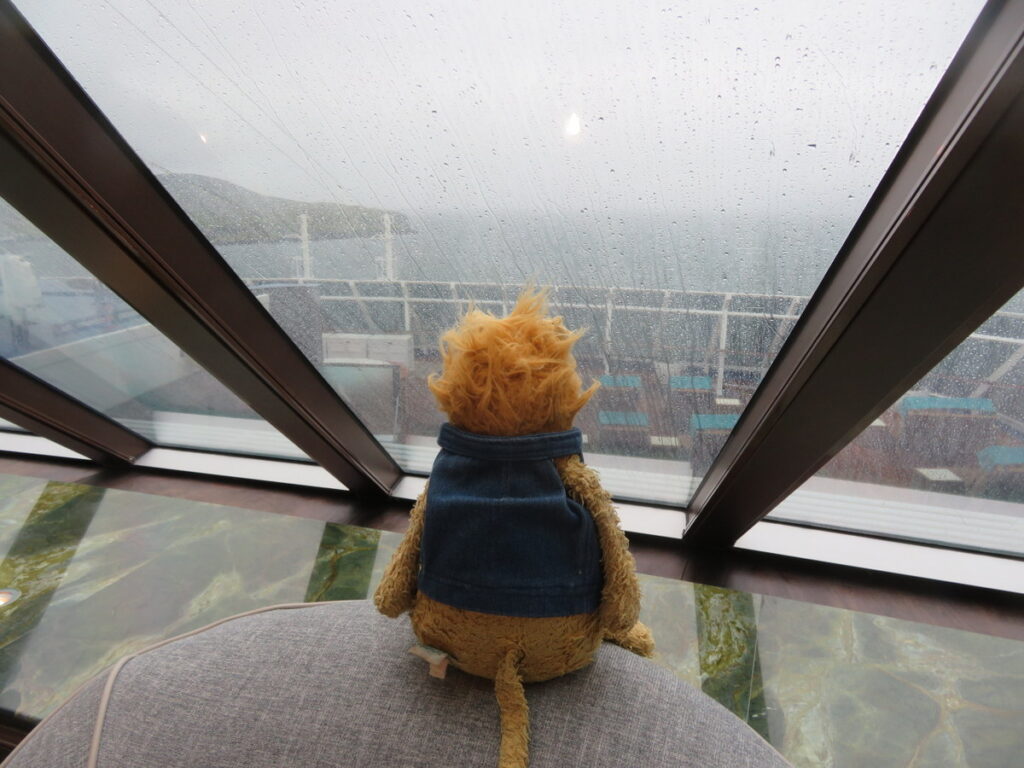

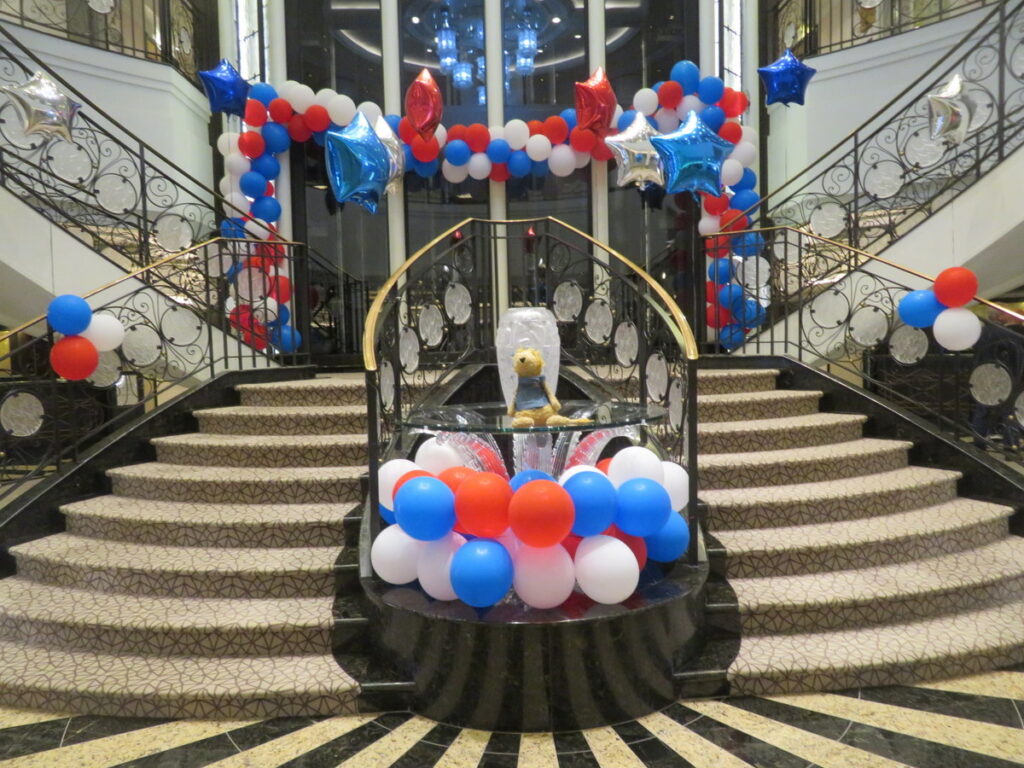
Love,
Lion-san

What a trip filled with new places to explore! I’m glad to know my father (Robert Bruce)’s namesake, Robert the Bruce, successfully defended his country against the English! It sounds like he was pretty clever (and his horses were pretty smart, too)! Our son, Robert Bruce Pixley, also carries that historic name!
Lion son, I know
I had a Shetland sweater. I know I’ve seen Shetland pony, and now you’ve seen the Shetland Islands. How lovely! I wonder if they fought all those battles wearing kilts, lol. Thank you for sharing your trip.
You are a lucky little lion.
Love, LaVache’s Grandma
Our guide told us that kilts were not yet the fashion when Bannockburn was fought. Soldiers wore tunics and leggings. The movie Braveheart got it wrong! He also said kilts are woven so tightly that they’re waterproof, and soldiers in later times would sleep on them, then shake them out and put them on.